Toenail curved inward. Curved Toenails: Understanding Pincer Nails and Ingrown Toenails
What causes toenails to curve inward. How can pincer nails lead to ingrown toenails. What are the symptoms of ingrown toenails. How to prevent and treat curved toenails and associated complications.
The Nature of Pincer Nails: Causes and Characteristics
Pincer nails, also known as trumpet nails or omega nails, are a nail deformity characterized by an exaggerated curvature of the nail plate. This condition primarily affects toenails, particularly the big toe, causing the lateral edges of the nail to curve inward towards each other as they grow. The result is a nail that resembles a pincer or tube-like shape, hence the name.
Several factors can contribute to the development of pincer nails:
- Fungal infections (onychomycosis)
- Certain medications, particularly beta-blockers
- Tumors or cysts near the nail bed
- Autoimmune diseases such as lupus or psoriasis
- Genetic predisposition (although no specific genes have been identified)
Are pincer nails a serious condition? While not inherently dangerous, pincer nails can cause discomfort and increase the risk of developing ingrown toenails. If left untreated, they may lead to pain, difficulty walking, and potential infections.

Diagnosing and Treating Pincer Nails: Medical Interventions
If you suspect you have pincer nails, it’s crucial to consult a podiatrist for a proper diagnosis. They can determine the underlying cause and recommend appropriate treatment options. In cases where fungal infections are responsible, antifungal medications may be prescribed to address the root cause.
For persistent pincer nails, treatment goals often focus on managing the condition and preventing complications. Some strategies include:
- Avoiding tight socks and shoes, especially high heels
- Using specialized orthotics to gradually straighten the nail plate
- Proper nail trimming techniques
- In severe cases, surgical intervention to remove the nail matrix
Can pincer nails be permanently cured? While some cases may resolve with treatment of the underlying cause, others may require ongoing management. The key is to work closely with a healthcare professional to develop an effective treatment plan.
The Link Between Pincer Nails and Ingrown Toenails
One of the primary concerns associated with pincer nails is their increased likelihood of developing into ingrown toenails. The excessive curvature of pincer nails makes it easier for the edges to grow into the surrounding skin, leading to this painful condition.
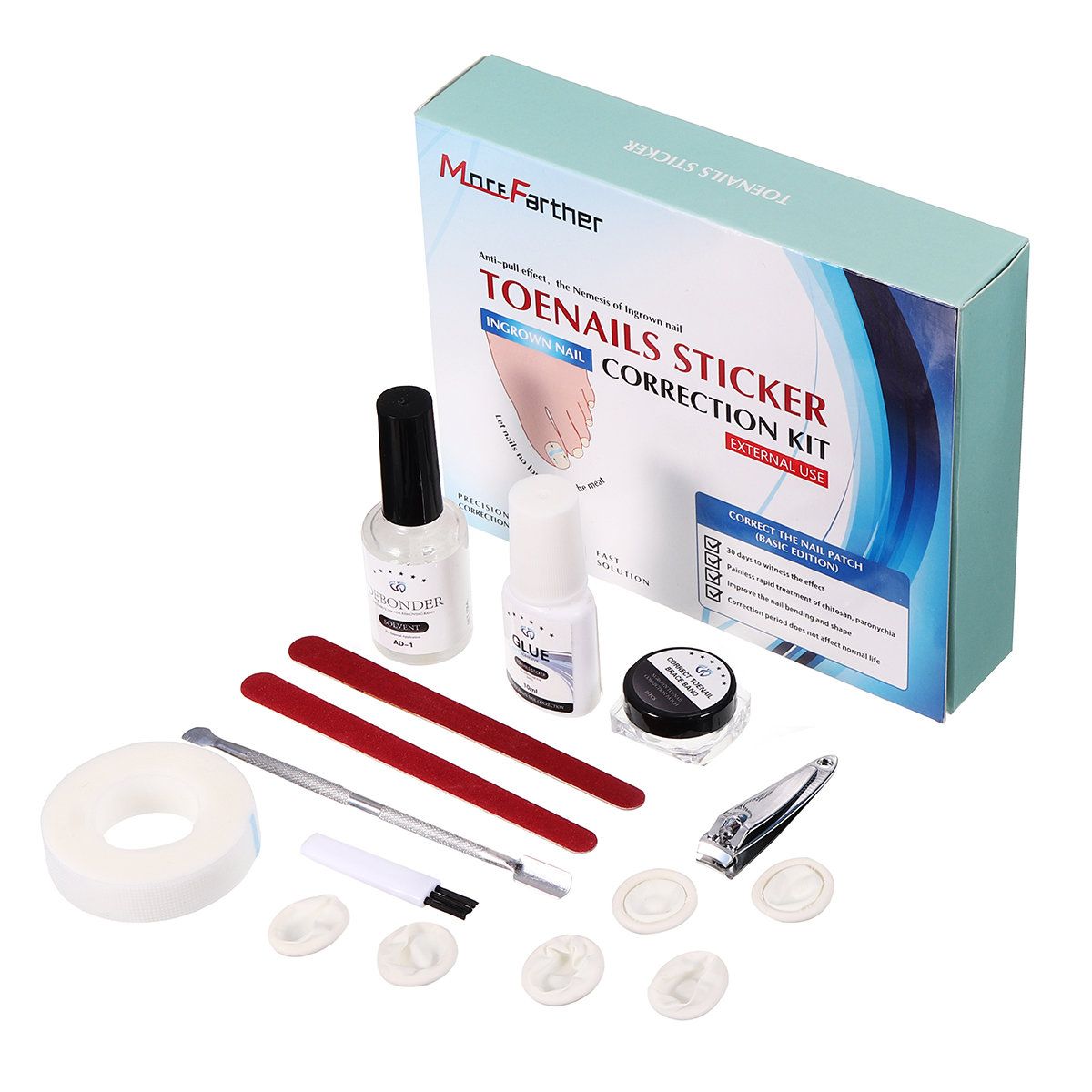
Ingrown toenails occur when the edges or corners of the nail pierce the adjacent skin and continue to grow inward. This condition is particularly common in the big toe and can cause various symptoms:
- Pain, redness, and swelling around the affected area
- Drainage or pus formation
- Foul odor
- Excess skin tissue growth around the injured area
Why are people with pincer nails more susceptible to ingrown toenails? The inward curvature of pincer nails creates a natural tendency for the nail edges to grow into the surrounding skin, increasing the risk of ingrown toenails.
Preventing Ingrown Toenails in Individuals with Pincer Nails
For those with pincer nails, taking proactive steps to prevent ingrown toenails is crucial. Here are some effective strategies:
- Proper nail trimming: Avoid cutting nails too short or at sharp angles
- Wearing appropriate footwear: Choose shoes that provide ample room for toes
- Maintaining foot hygiene: Keep feet clean and dry to prevent bacterial growth
- Using protective orthotics: Special devices can help gradually straighten the nail plate
- Regular podiatric care: Consult a professional for ongoing management and early intervention
How often should individuals with pincer nails trim their toenails? It’s generally recommended to trim toenails every 6-8 weeks, allowing the free edge to grow out slightly to reduce the risk of ingrown nails.

The Science Behind Toenail Curvature: Insights from Physics
Recent research has shed light on the physics behind nail conditions, including pincer nails and ingrown toenails. Physicist Cyril Rauch conducted a study exploring how nails, essentially plate-like structures, can change their curvature.
Key findings from this research include:
- Nails are composed of keratin, a protein found in the outer layer of human skin
- Nail growth occurs as cells from the matrix multiply and are pushed outward
- The nail bed features ridges that allow for smooth growth while maintaining adhesion to the fingertip
- Changes in the balance of forces acting on the nail can lead to alterations in curvature
How does this scientific understanding contribute to treating nail conditions? By providing insights into the mechanical forces at play, this research may lead to more effective treatments and prevention strategies for pincer nails and related issues.
Toenail Physics: Why Big Toes Are Prone to Ingrown Nails
The study of toenail physics offers explanations for why certain toes, particularly the big toe, are more susceptible to ingrown nails. Several factors contribute to this phenomenon:

- Size and pressure: The big toe bears more weight and pressure during walking and standing
- Nail shape: The curved nature of toenails increases the likelihood of inward growth
- Growth rate: Toenails grow more slowly than fingernails, allowing more time for complications to develop
- Footwear impact: Shoes can exert pressure on toes, influencing nail growth patterns
Why do children and pregnant women experience higher rates of ingrown toenails? Hormonal changes and rapid growth during these periods can affect nail growth patterns, potentially increasing the risk of ingrown toenails.
Advanced Treatment Options for Severe Pincer Nails
In cases where conservative treatments prove ineffective, more advanced interventions may be necessary. These can include:
- Nail avulsion: Partial or complete removal of the affected nail
- Matrixectomy: Destruction of the nail matrix to prevent regrowth
- Laser therapy: Use of targeted laser treatments to reshape the nail
- Reconstructive surgery: In severe cases, surgical reconstruction of the nail bed may be required
What factors determine the most appropriate treatment for severe pincer nails? The choice of treatment depends on the severity of the condition, underlying causes, overall health of the patient, and potential for recurrence.
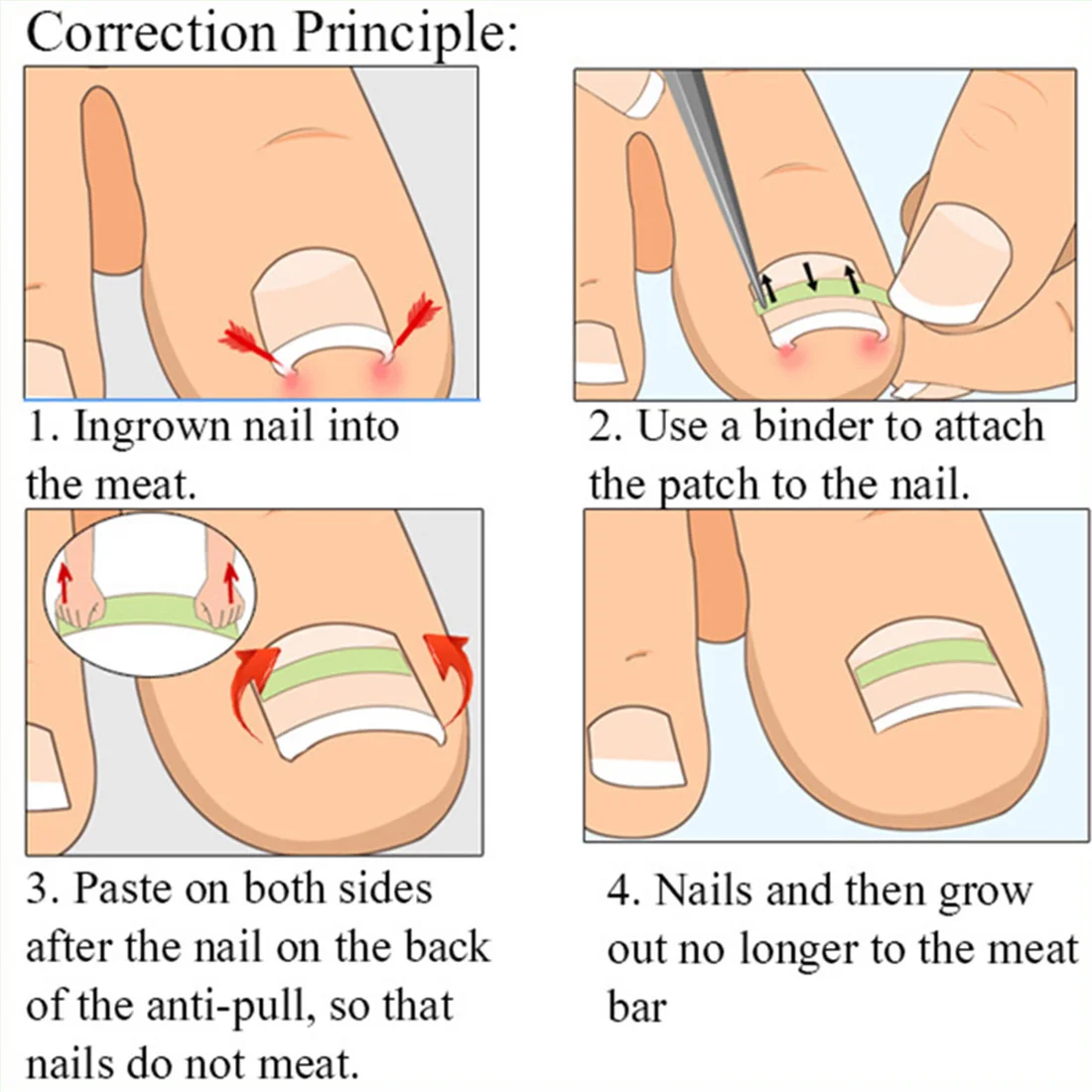
Surgical Procedures for Pincer Nails
When surgical intervention is necessary, podiatrists may opt for procedures to remove the nail matrix or root. These surgeries typically involve:
- Administration of local anesthesia to numb the foot
- Removal of the affected nail
- Use of chemical agents or laser technology to destroy the nail matrix
- Proper wound care and follow-up to ensure proper healing
How long is the recovery period after pincer nail surgery? Recovery times can vary, but patients typically experience full healing within 4-6 weeks, with proper aftercare and follow-up appointments crucial for optimal results.
Living with Pincer Nails: Lifestyle Adjustments and Long-term Management
For individuals with chronic pincer nails, adopting certain lifestyle changes can help manage the condition and reduce complications:
- Regular moisturizing of feet and nails to maintain flexibility
- Wearing breathable footwear and moisture-wicking socks
- Practicing good foot hygiene, including proper drying between toes
- Using protective toe caps or splints as recommended by a podiatrist
- Avoiding activities that put excessive pressure on toenails
Can dietary changes impact pincer nail growth? While no specific diet has been proven to directly affect pincer nails, maintaining overall health through proper nutrition may support nail health and potentially reduce complications.
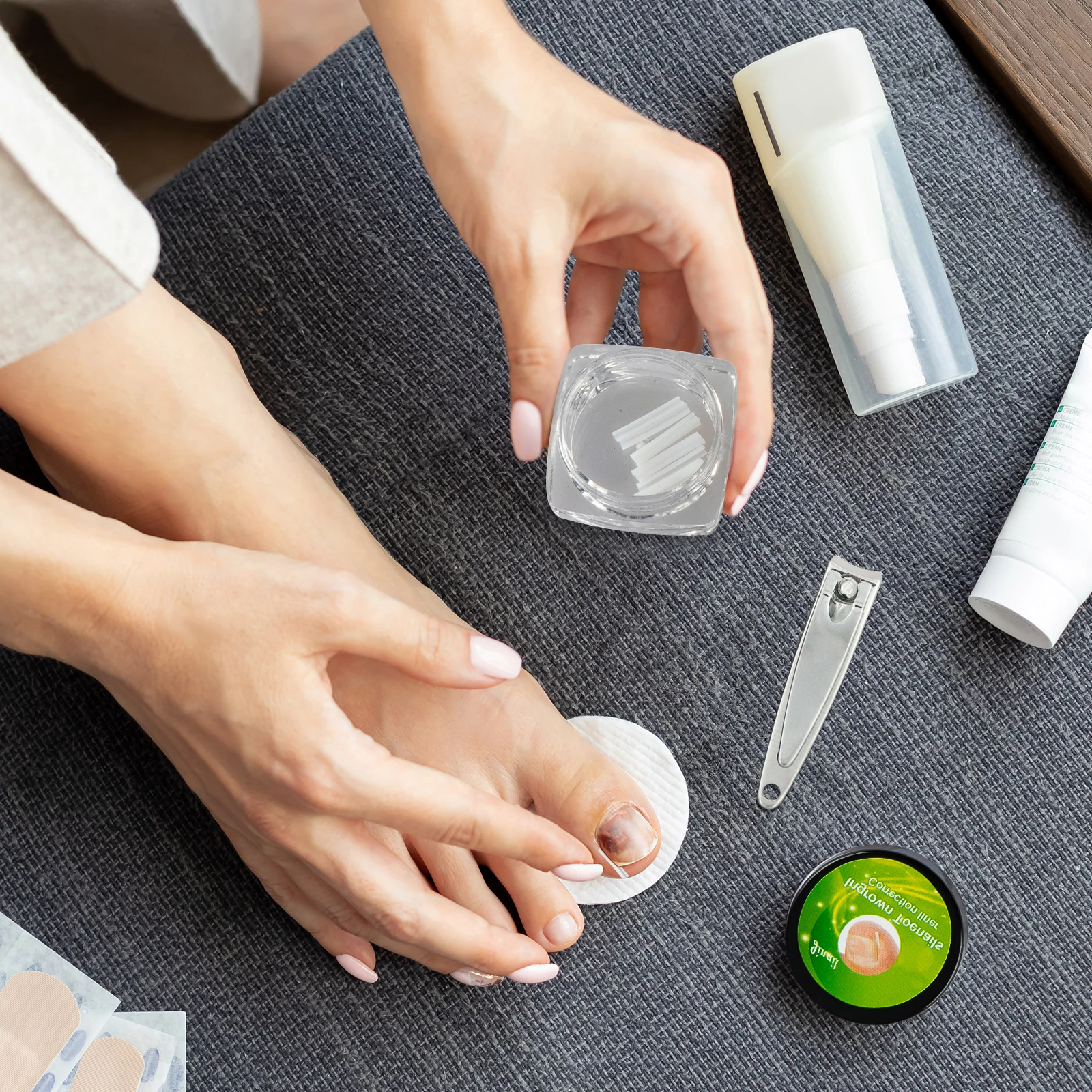
Monitoring and Maintaining Nail Health
Regular self-examination and professional check-ups are essential for individuals with pincer nails. Key aspects of ongoing management include:
- Inspecting nails regularly for signs of ingrowth or infection
- Scheduling routine podiatric appointments for professional assessment
- Promptly addressing any changes in nail appearance or discomfort
- Following prescribed treatment plans and medication regimens
- Documenting nail growth patterns and any recurring issues
How frequently should individuals with pincer nails visit a podiatrist? It’s generally recommended to have professional check-ups every 3-6 months, or more frequently if complications arise or as advised by your healthcare provider.
Emerging Research and Future Directions in Pincer Nail Treatment
As our understanding of nail physics and biology continues to evolve, new approaches to treating pincer nails are emerging. Some promising areas of research include:
- Gene therapy to address potential genetic factors
- Advanced biomaterials for nail reconstruction
- Personalized treatment plans based on individual nail characteristics
- Non-invasive techniques for reshaping nails
- Improved diagnostic tools for early detection and intervention
What role might artificial intelligence play in the future of pincer nail treatment? AI could potentially assist in early diagnosis, predicting treatment outcomes, and developing personalized management strategies based on vast datasets of nail conditions and treatments.
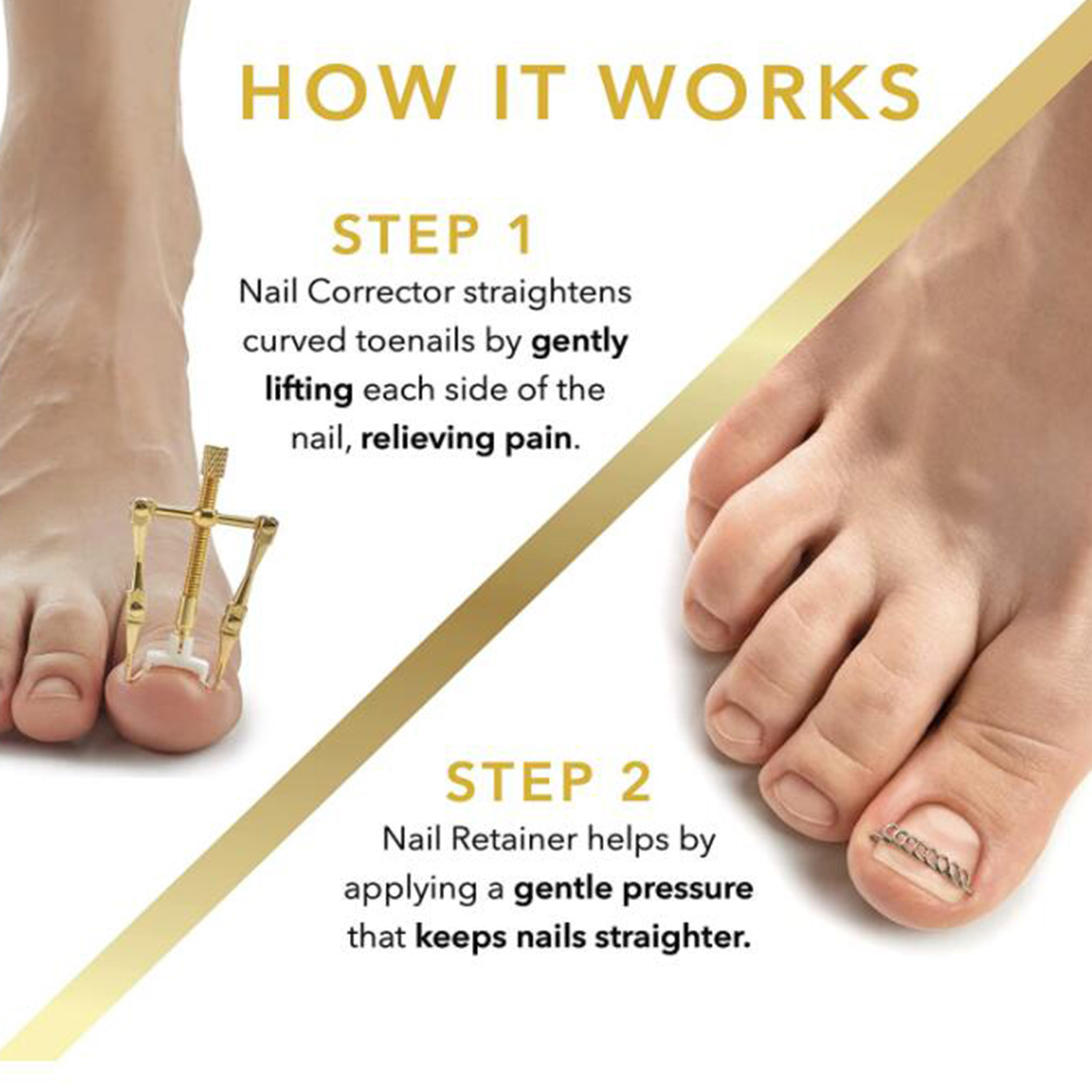
Collaborative Approaches to Nail Health
The management of pincer nails often requires a multidisciplinary approach, involving:
- Podiatrists for primary care and surgical interventions
- Dermatologists for addressing skin-related complications
- Rheumatologists if autoimmune factors are involved
- Physical therapists for gait analysis and corrective exercises
- Nutritionists to support overall health and nail strength
How can patients best navigate the various healthcare professionals involved in pincer nail treatment? Maintaining open communication with your primary care provider and seeking referrals to specialists as needed can ensure comprehensive care and optimal outcomes.
Understanding the complexities of pincer nails and their potential complications empowers individuals to take proactive steps in managing their nail health. By staying informed about the latest research, treatment options, and preventive strategies, those affected by pincer nails can work towards maintaining healthy, comfortable feet and minimizing the risk of painful ingrown toenails. Regular professional care, coupled with diligent self-monitoring and lifestyle adjustments, forms the cornerstone of effective long-term management for this challenging nail condition.
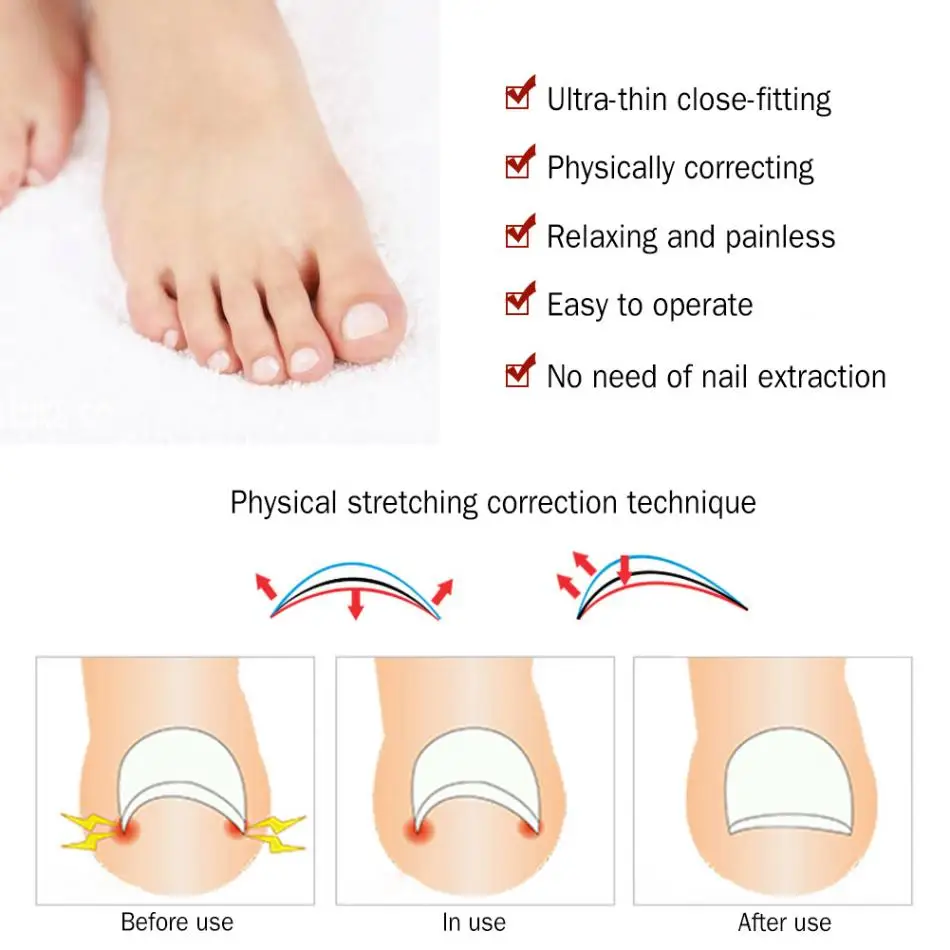
Curled Toe Nails? All About Pincer Nails and Ingrown Toenails
If you notice that your toenails have a curled appearance or that the lateral edges seem to slope inward toward one another as the free edge grows, you may have what’s known as a pincer nail. Learn more about this condition and why you might be at risk for ingrown toenails if you have it.
What Causes Pincer Toenails?
Pincer toenails are a nail deformity that causes over-curvature in the nail. There can be numerous causes of pincer toenails, such as:
- A fungal disease, like Onychomycosis
- Certain medications, like beta-blockers
- A tumor or cyst near the nail bed
- Autoimmune diseases, like lupus or psoriasis
- A family history of pincer nails (although no specific genes have been identified)
You’ll want to visit a podiatrist to find the root cause of your pincer toenails. If it is caused by something like onychomycosis, then the podiatrist can prescribe an antifungal medication.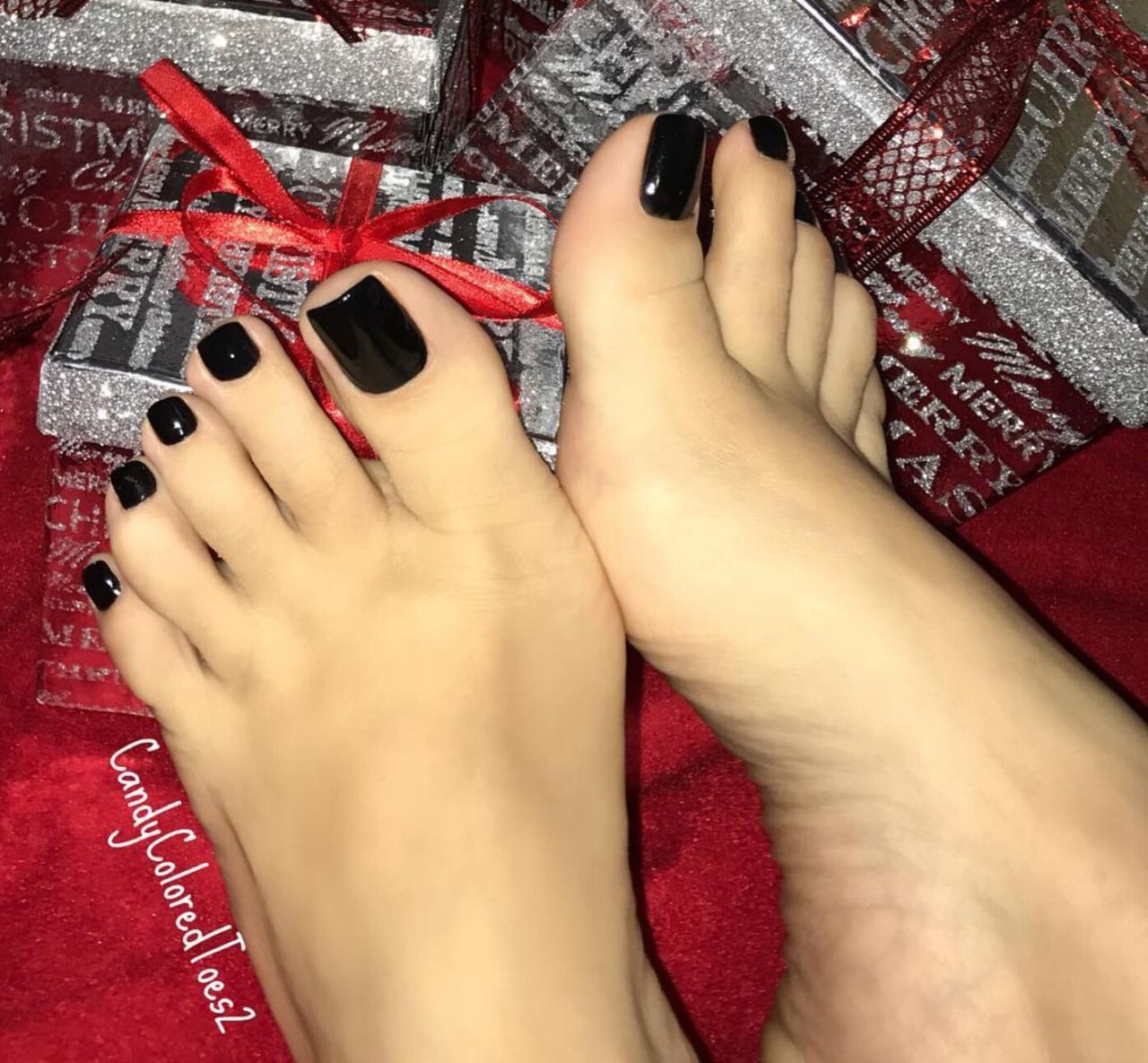
What Do You Do If Pincer Nails Don’t Go Away?
If you have an autoimmune disease or a family history of pincer nails, it may be harder to get rid of this condition. Pincer nails aren’t inherently bad, and if they keep occurring, then the goal may just be to manage the condition.
For instance, you can reduce the development of pincer nails by avoiding tight socks and tight shoes, like high heels. If your pincer nails are caused by certain medications, you may want to talk with your doctor about alternative options with fewer side effects.
The main concern of recurring pincer nails is the development of ingrown toenails. So if you have pincer nails, then you should keep an eye out for ingrown toenails.
What Are Ingrown Toenails?
When the edges of your nails pierce the surrounding skin and keep growing, this is known as an ingrown toenail. This is a very common condition in big toenails. If you have an ingrown toenail, you may have a
- A foot odor
- Drainage or pus around the toe
- Pain, redness, or swelling
- Excess skin tissue around the injured area
Because pincer toenails curl and taper inward, it’s even easier for toenails to grow into the skin.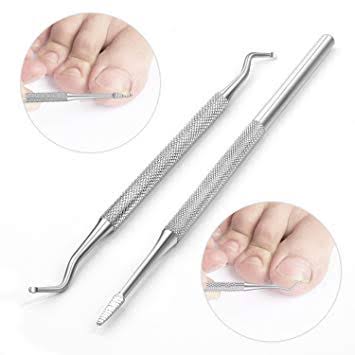 Ingrown toenails can start out as a mild irritation, but they can become more painful because trapped bacteria and debris can cause infections. If you have diabetes or circulation issues, then ingrown toenails can turn into dangerous infections.
Ingrown toenails can start out as a mild irritation, but they can become more painful because trapped bacteria and debris can cause infections. If you have diabetes or circulation issues, then ingrown toenails can turn into dangerous infections.
How Can You Avoid Ingrown Toenails With Pincer Nails?
If you have pincer nails, you may be tempted to trim the free end very short. However, this can increase the risk of ingrown toenails, so it’s a good idea to let the free end grow out a little bit. Your podiatrist can then fit you with a special orthotic to slowly straighten your nail plates. Once the nail plate is straightened, it will be less likely to develop into an ingrown toenail.
When you do need to trim your toenails, don’t clip them at a sharp right angle. Trimming your nails this way will make it easier for the nail to pierce and grow into the skin.
If you play sports or exercise a lot, bring an extra pair of socks so that you don’t work out in damp socks. Moist environments can be a breeding ground for fungus and bacteria, like Staphylococcus, which can cause infections in ingrown toenails.
Moist environments can be a breeding ground for fungus and bacteria, like Staphylococcus, which can cause infections in ingrown toenails.
Lastly, if you have severe, recurring pincer nails, your podiatrist may opt for a surgery to completely remove the nail matrix or root. During these surgeries, the podiatrist will use a local anesthetic to numb your foot. Then they may use a chemical or a laser to remove the toenail.
Toenail Physics Explains Why Big Toes Are More Likely to Suffer Ingrown Nails |
Science
It’s easy to take your toes for granted—that is, until your flesh starts swelling, throbbing and burning with the pain of an ingrown toenail. Then the all-to-common condition begins raising some puzzling questions: Why would the side of a toenail grow into the surrounding toe, and why does this happen more often to kids and pregnant women? Why is the big toe particularly prone to ingrown nails?
Physicist Cyril Rauch tackled these and other thorny toenail mysteries in a recent study on the physics behind nail conditions.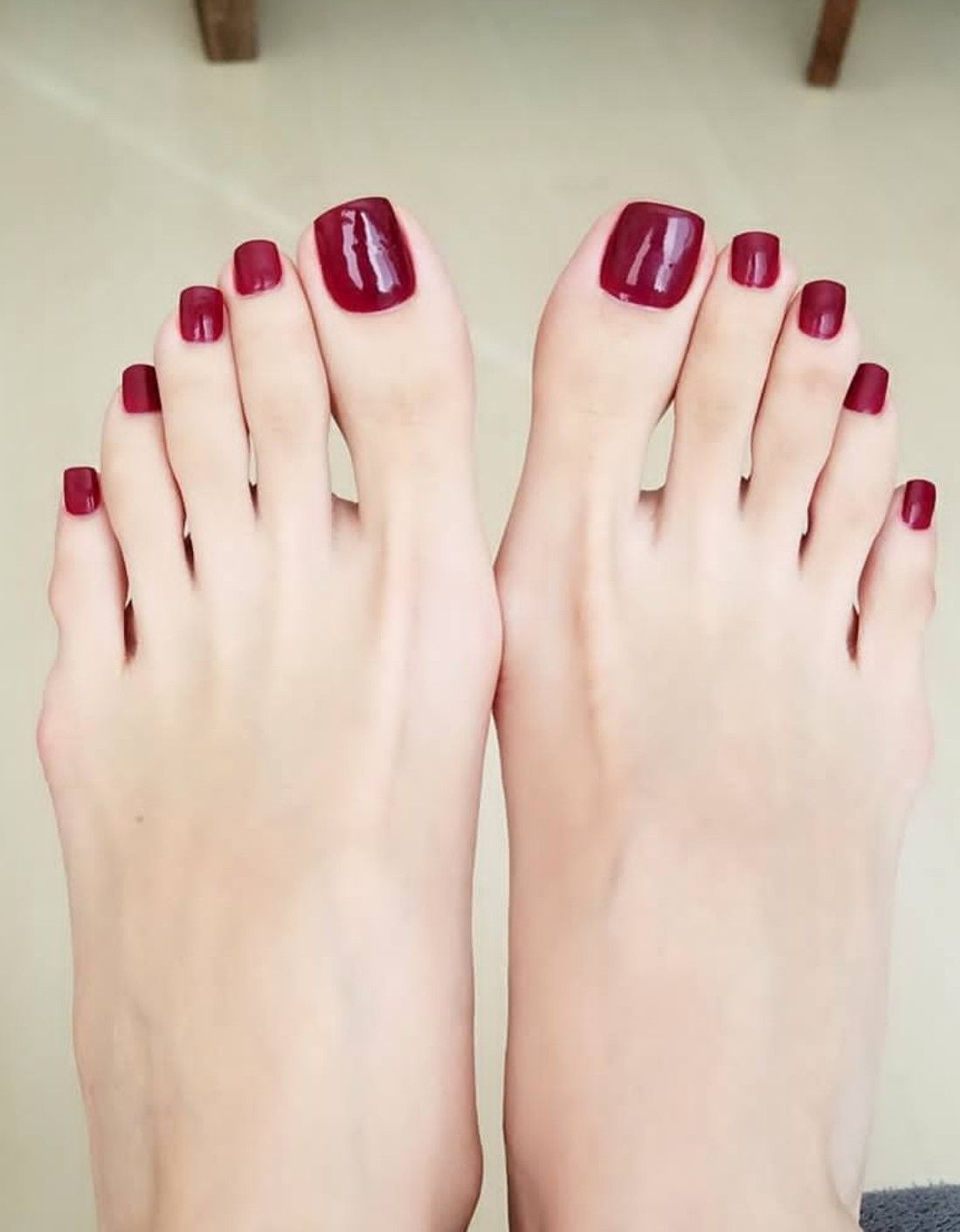 “Dermatologists have been dealing with these questions, but we thought physics could be involved in explaining how a toenail, which is essentially a type of plate, can change its curvature,” he says.
“Dermatologists have been dealing with these questions, but we thought physics could be involved in explaining how a toenail, which is essentially a type of plate, can change its curvature,” he says.
Nails are made of keratin, a protein found in the outer layer of human skin. Nails grow as cells from a region inside the finger called the matrix multiply and get pushed outward. Compacted layers of old cells form the hard, translucent nail plate. But the nail must be able to grow smoothly while also adhering to the fingertip. That’s why the nail bed has a series of ridges that stretch from the lunula—the white “half moon” shape that is the visible part of the matrix—toward the tip. The underside of the nail plate boasts a similar set of ridges, so that the two fit together like a set of parallel rails on which the nail can slide and grow.
According to Rauch, nail growth is a delicate balancing act between the stresses of growth and adhesion.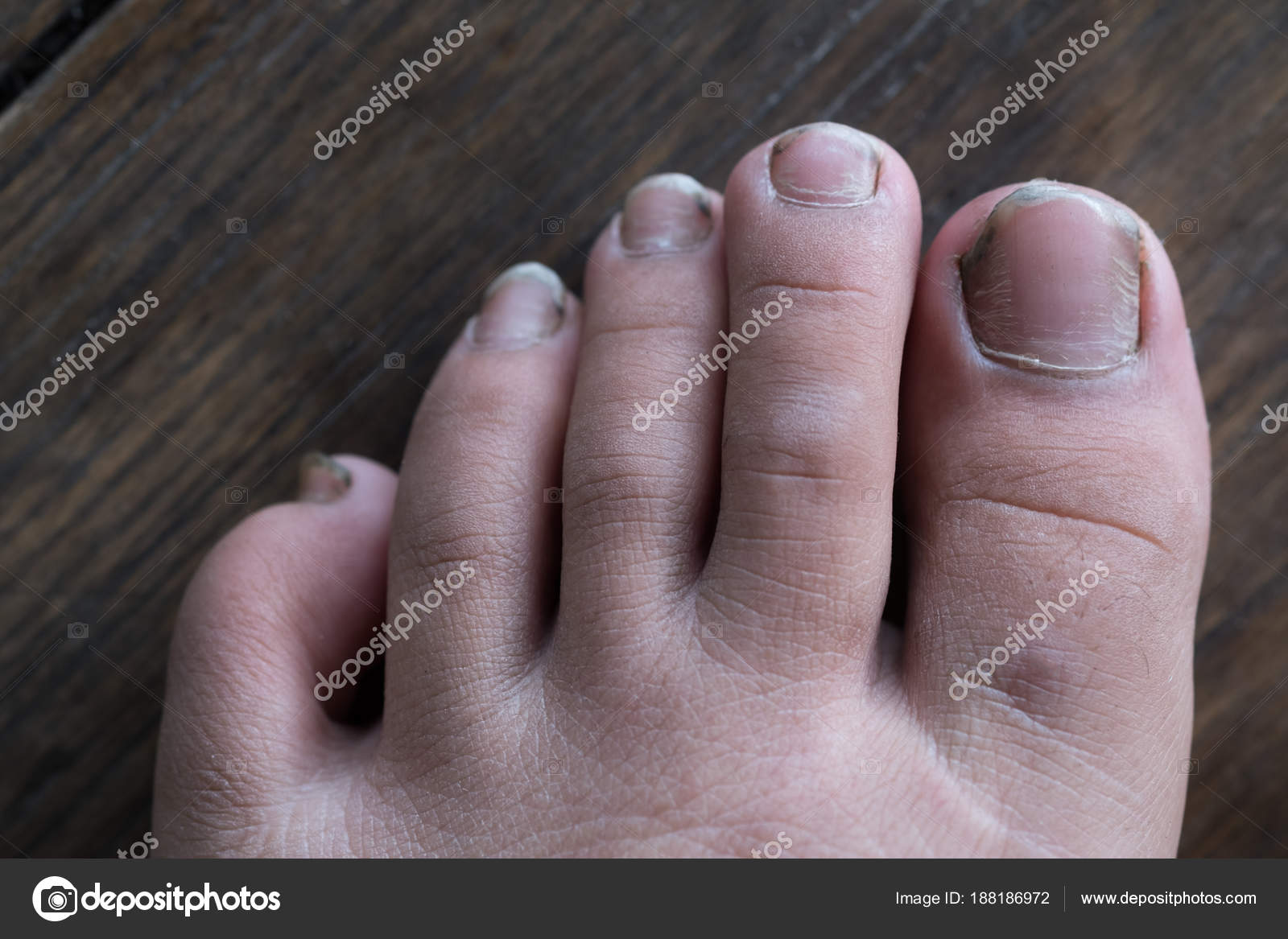 If the nail grows too quickly or slowly, residual stresses can force the nail’s curvature to change, resulting in a painful cut into the surrounding skin. That helps explain why certain people are more prone to ingrown nails.
If the nail grows too quickly or slowly, residual stresses can force the nail’s curvature to change, resulting in a painful cut into the surrounding skin. That helps explain why certain people are more prone to ingrown nails.
“We found by looking through the literature that pregnant women tend to get a lot of ingrown nails. Maybe 15 or 19 percent of pregnant women can get them, so it’s kind of common,” Rauch says. “When you are pregnant, you have a lot of growth hormones active inside your body. Similarly, in children, there is a stronger element of growth happening.” In elderly people, the growth rate of the nail slows down relative to the adhesion strength, creating a condition called pincer nail where the nail plate forms a tight curl.
Different examples of pincer nails, one of the conditions that can arise when the stresses of growth and adhesion get out of balance.
(Adapted from “A Clinical Study of 35 Cases of Pincer Nails” by Lee et al. , Annals of Dermatology [2001])
, Annals of Dermatology [2001])
The nail’s initial curvature also reveals the reason thumbnails don’t become ingrown as often as big toenails, says Rauch: “The topography of nails is slightly different, and that will lead to what we call in physics ‘boundary conditions’ which differ between fingernails and toenails,” he explains. “For example, if you look at the thumbnail and big toenail, what you will see is that they are both quite large, but the toenail will be much flatter at the end compared to the thumbnail.”
Because the toenail is relatively flat, it feels the most stress between growth and adhesion near the tip. When the two forces get out of balance, they are more likely to cause the flat toenail to veer off the rails and become ingrown. With a rounded shape like the thumb, it’s more difficult for stress to build up at the tips and promote that painful growth.
At the University of Nottingham’s School of Veterinary Medicine and Science, Rauch and coauthor Mohammed Cherkaoui-Rbati are hoping that their research will transcend species and help cure some of the common ailments suffered by hoofed animals as well. Hooves are also made of keratin, and they grow around an animal’s toes in a similar fashion.
Hooves are also made of keratin, and they grow around an animal’s toes in a similar fashion.
“Physics doesn’t involve any genes, it doesn’t differentiate between species, it’s all about stress and forces,” Rauch says. Of course, there are some major differences between the human toenail and the typical ungulate hoof. One obvious distinction is that animals tend to walk on their hooves, so there is weight applied to a hoof’s free edge. “These differences clearly must be taken into consideration,” Rauch notes. “But essentially speaking, you have many of the same things occurring that we hope can allow us to understand how the cells that divide to form a hoof or a nail are affected by the same physics.”
The growth rates of nails, hooves and claws appear similar across species, the study found. There are also similarities in the kinds of ailments and associated conditions prevalent among people and livestock—though the consequences for livestock can be harsh.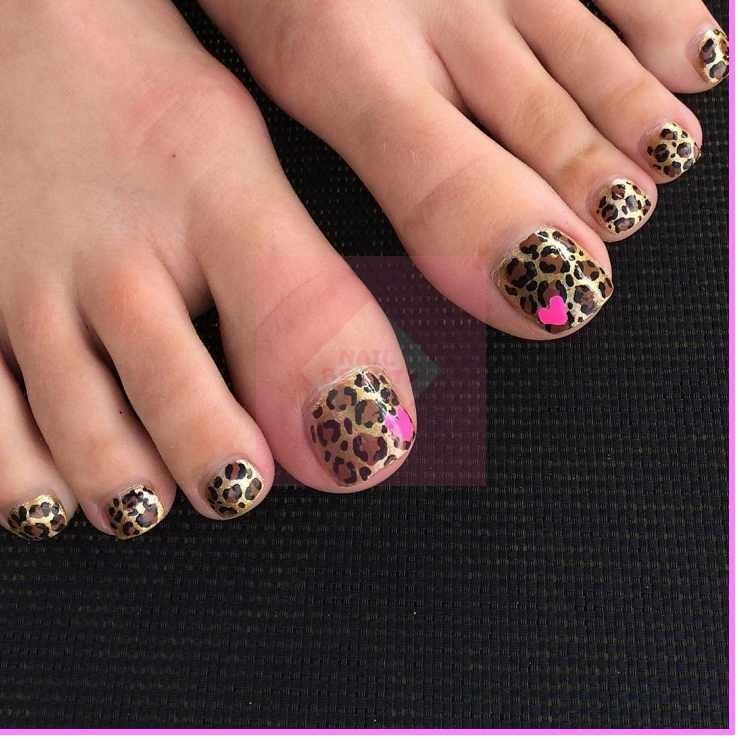 Farm animals hobbled by hoof problems may be culled when they are unable to earn their keep, like cows that can’t produce their regular milk quota.
Farm animals hobbled by hoof problems may be culled when they are unable to earn their keep, like cows that can’t produce their regular milk quota.
“Mares have a tendency to have a hoof-related lameness condition when they are pregnant, just as women suffer from ingrown toenails,” Rauch says. “And when cows begin making milk there are many problems that arise with their hooves. So we are trying to capture something that has value across species to understand why hooves and nails alike can be affected by these conditions.”
Aside from natural causes, people can wind up with troublesome toenails if they forsake nail care for beauty. A simple pedicure is actually an exercise in physics, because trimming the nail changes the boundary conditions and thus alters the stresses throughout the nail plate. Pedicurists who flatten the free edges of toenails may end up creating conditions ripe for ingrown nails, Rauch notes, especially among young people like teenagers whose nails are growing at a faster rate.
So what’s the takeaway for pedicure lovers? Make sure the person trimming your nails crafts the right shape. “If you change the shape of the free edge, you affect the stress. In the French manicure they tend to flatten the nail as much as possible, and that has a tendency to buckle the nail. I think that if you repeat this many times, then you may end up with an ingrown condition,” he says.
Treatment Options for Curved Toenails
The chief function of toenails is to protect the toes. Like your hair, skin and fingernails, your toenails are made up of keratin. Keratin is a type of protein that makes your toenails tough and resistant to many outside elements. But sometimes, due to various causes, our nails can experience some painful conditions. One of these is having curved toenails.
Having curved toenails bring a lot of pain, accompanied by swelling and redness. If left unchecked and untreated, it could lead to infections.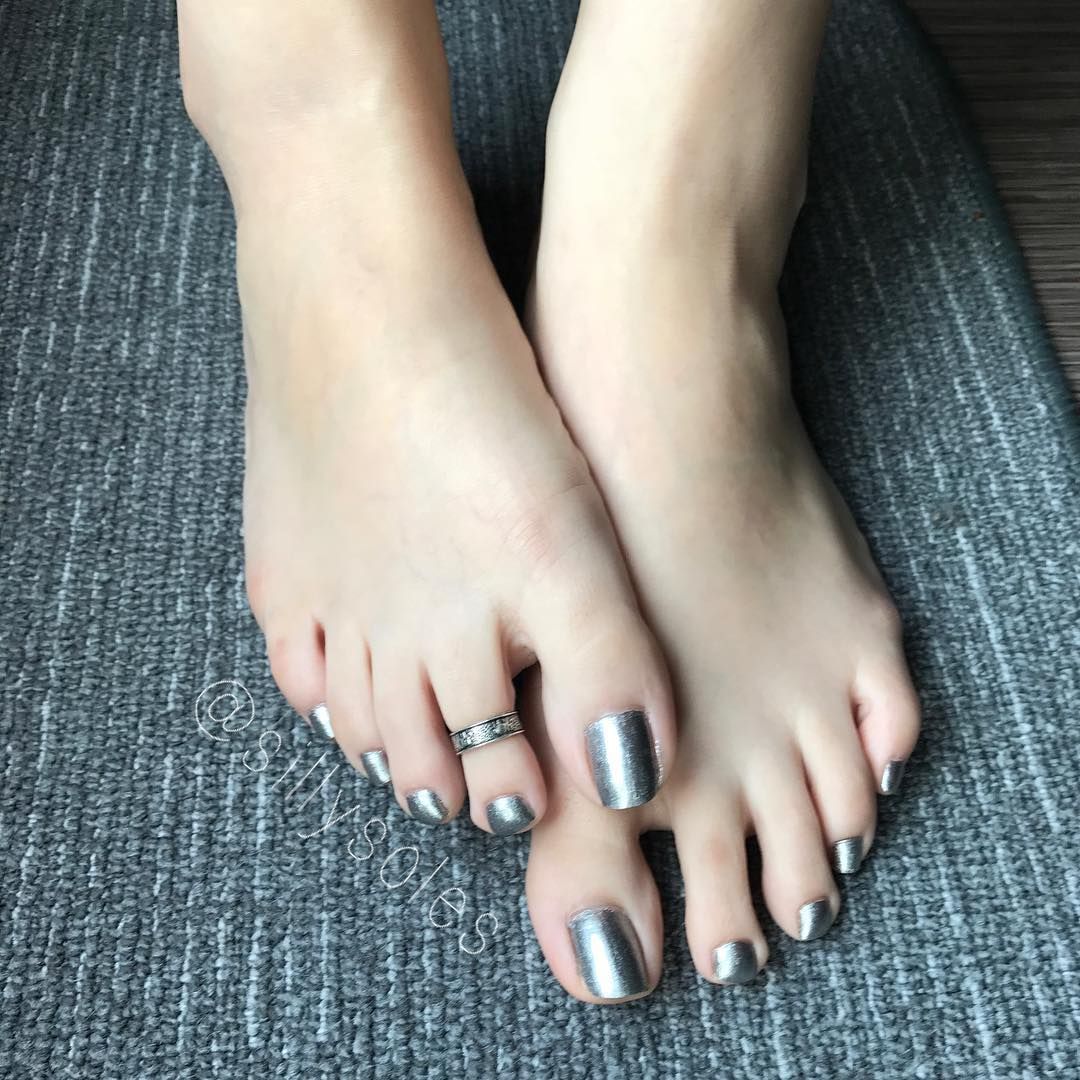 People who have this condition may notice that the skin becomes hard at first, followed by the formation of pus or fluid in the adjoining area.
People who have this condition may notice that the skin becomes hard at first, followed by the formation of pus or fluid in the adjoining area.
What is it?
A curved toenail, also called as a pincer nail, is a nail deformity where the sides of the toenail make an inward curl, digging into the skin. It results to what is called as the “ingrown toenail” because the sides of the nail grows directly into the skin, instead of growing straight and outward, becoming embedded inside it.
You may set the stage for an ingrown toenail if you trim your toenails too short, particularly on the sides of your big toes. When you trim your toenails, trim them like the shape of your toes by tapering the corners. However, this technique may encourage your toenail to grow into the skin of your toe. The edge of the toenail forms a curl which digs into your skin at the side or end of the toe. A curled ingrown nail is most likely to happen especially if you wear an ill-fitting footwear.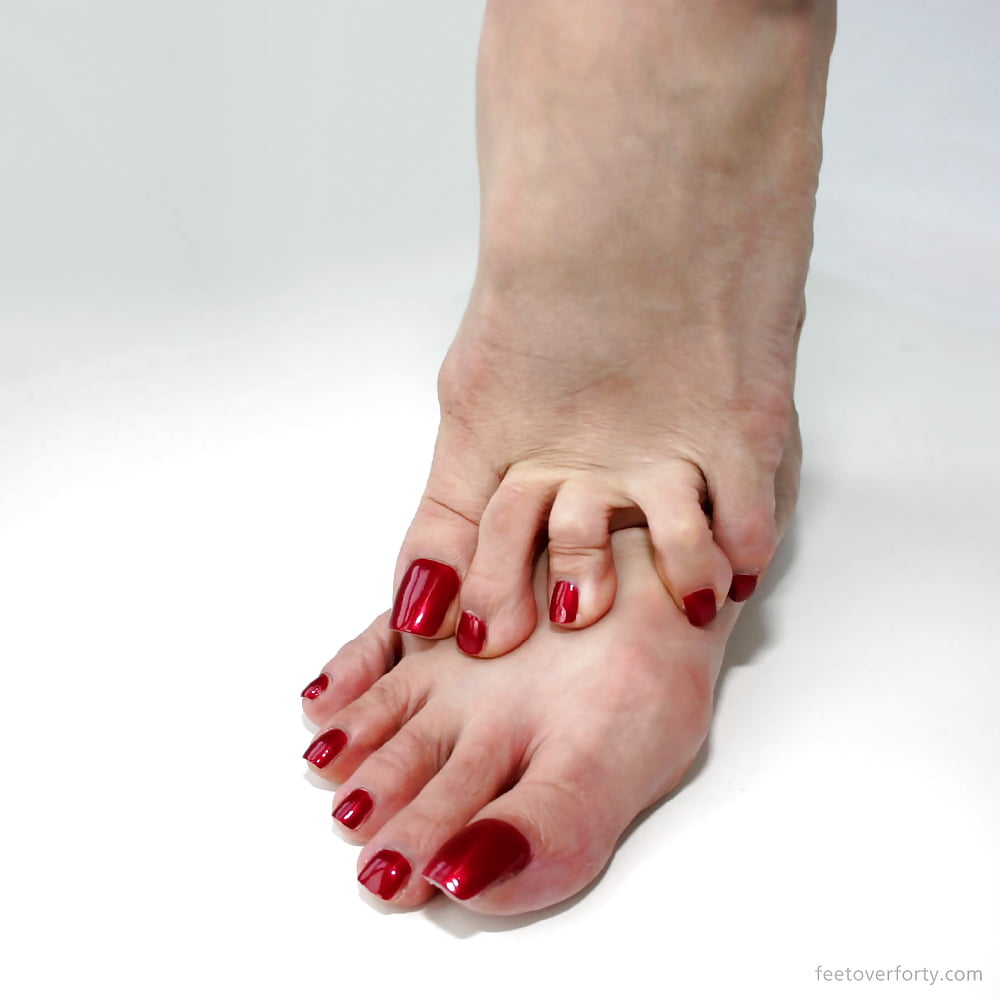
What causes it?
According to the National Health Services, curved toenails may be more common in people with sweaty feet, such as teenagers. Both males and females can suffer curved toenails. Older people may also be at higher risk because toenails thicken with age.
The main factors which can cause this condition include:
Trauma
This is one of the most common reasons for having a curved toenail. It happens if the toe has suffered some kind of damage, such as the toe collided head-on with a blunt object. This can effectively change the overall course of nail growth, which causes it to grow in an unfavorable direction.
The big toe is the most susceptible to inner curved nails, because it is usually the first one to make an impact and absorbs almost all the shock.
It also doesn’t necessarily have to be a one-time incident. People who engage in a lot of athletic activities which put a lot of pressure on the toe end of their feet may also experience this.
Tight Shoes
Your shoes typically compensate for the lack of space by getting scrunched close together, when wearing shoes that are smaller than the appropriate size. You will notice your nails naturally start to curve inwards because of the constant pressure on them if you wear smaller shoes for a long enough time.
It is recommended to buy properly sized shoes. Don’t rely on your gut feel or guesswork. Even shoes with pre-determined sizes are still not reliable indications that it fits exactly to your foot. You should be particularly careful when choosing shoes for children, as their feet grow really fast because of growth spurts.
Small Toes
There are toes that are too small to accommodate the growth of the nails. As a result, the toenails gravitate inwards, forming an uncharacteristic curl.
Incorrect Cutting
This is by far the most common reason for an ingrown toenail. Most people cut their nails by following the curve of this toe.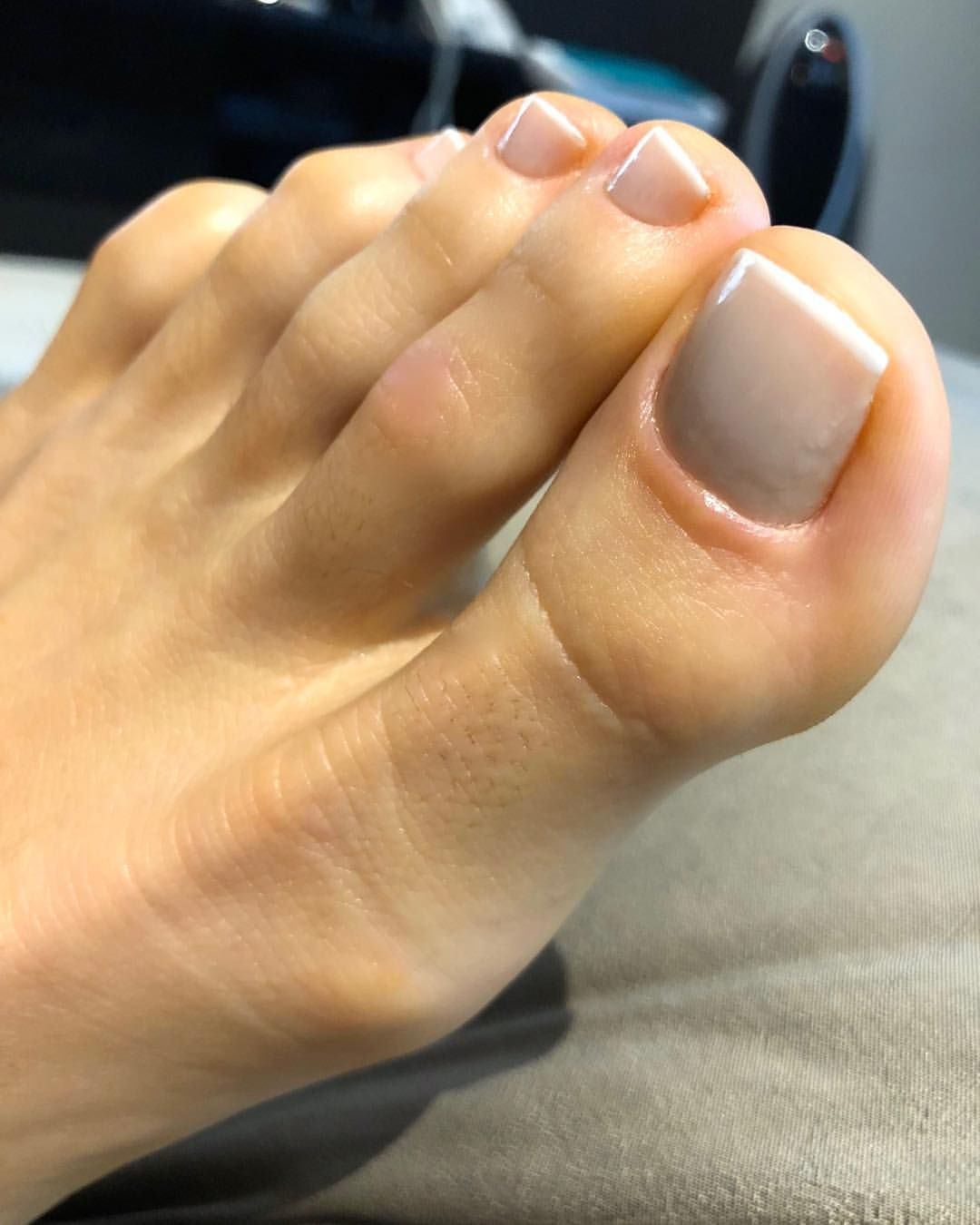 But cutting nails this way encourages the side of the nail to make a curl and dig into the skin. It is advised that you cut in straight lines to avoid potential in-growth. Check out Best Cuticle Nippers of 2020.
But cutting nails this way encourages the side of the nail to make a curl and dig into the skin. It is advised that you cut in straight lines to avoid potential in-growth. Check out Best Cuticle Nippers of 2020.
Poor Hygiene
Sweaty feet that are not regularly cleaned and dried are most likely to develop this condition. It is advised that you thoroughly wash your feet every day and trim your nails every few weeks.
Genetics
Some people more prone to having curved ingrown toenails due to genetics.
Diet
Recent studies show that iron and zinc deficiency causes the nails to curve inwards, which makes them more susceptible to trauma and injury.
Using your feet extensively during athletic activities can make you especially prone to getting curved toenails. Activities in which you repeatedly kick an object or put pressure on your feet for long periods of time can also cause toenail damage and increase your risk of ingrown toenails.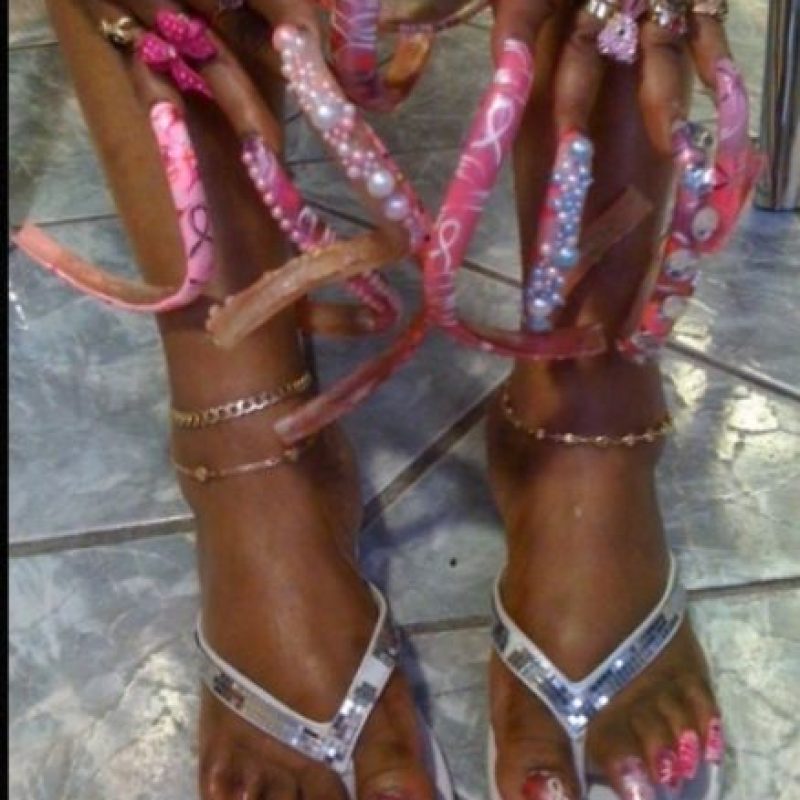 These activities include:
These activities include:
- Ballet
- Football
- Kickboxing
- Soccer
What are the symptoms?
Curved toenails can be painful, and they usually worsen in stages:
Early-stage symptoms include:
- Skin surrounding the toenail feels tender, swollen or hard
- Pain when pressure is placed on the toe
- Fluid building up around the toe
If your toe becomes infected, symptoms include:
- Red, swollen skin
- Pain
- Bleeding
- Oozing pus
- Overgrowth of skin around the toe
Prevention Tips
It is important to prevent having curved toenails rather than looking up for things on how to treat it. Here are some of the tips in order to prevent having curved toenails.
- Move around carefully to avoid toenail trauma
- Trim your toenails straight across, no shorter than the tip of your toe
- If your job increases your risk of toenail injury, wear protective footgear
Treatment options for curved toenails
Treating your curved toenails is a must as soon as they occur, to avoid infection. Mild cases may require minor treatment with some home remedies, while some serious cases may need surgical intervention.
Mild cases may require minor treatment with some home remedies, while some serious cases may need surgical intervention.
Home Remedies
There are lots of home remedies you can try to treat curved toenails.
- Soak in warm, soapy water
- Soak in apple cider vinegar
- Pack the area with dental floss or cotton
- Apply antibiotic ointment
- Wear comfortable shoes and socks
- Take an over-the-counter pain reliever
- Use a toe protector
- Try a toe brace
- See a doctor about oral antibiotics
- Consider nail removal
Surgical Treatment
According to the NHS, partial nail removal is 98 percent effective for preventing future ingrown toenails. Surgery for toenail treatments come in different types. Partial nail removal involves removing just the portion of the nail which is digging into your skin. The doctor comes over and numbs your toe before narrowing the affected toenail.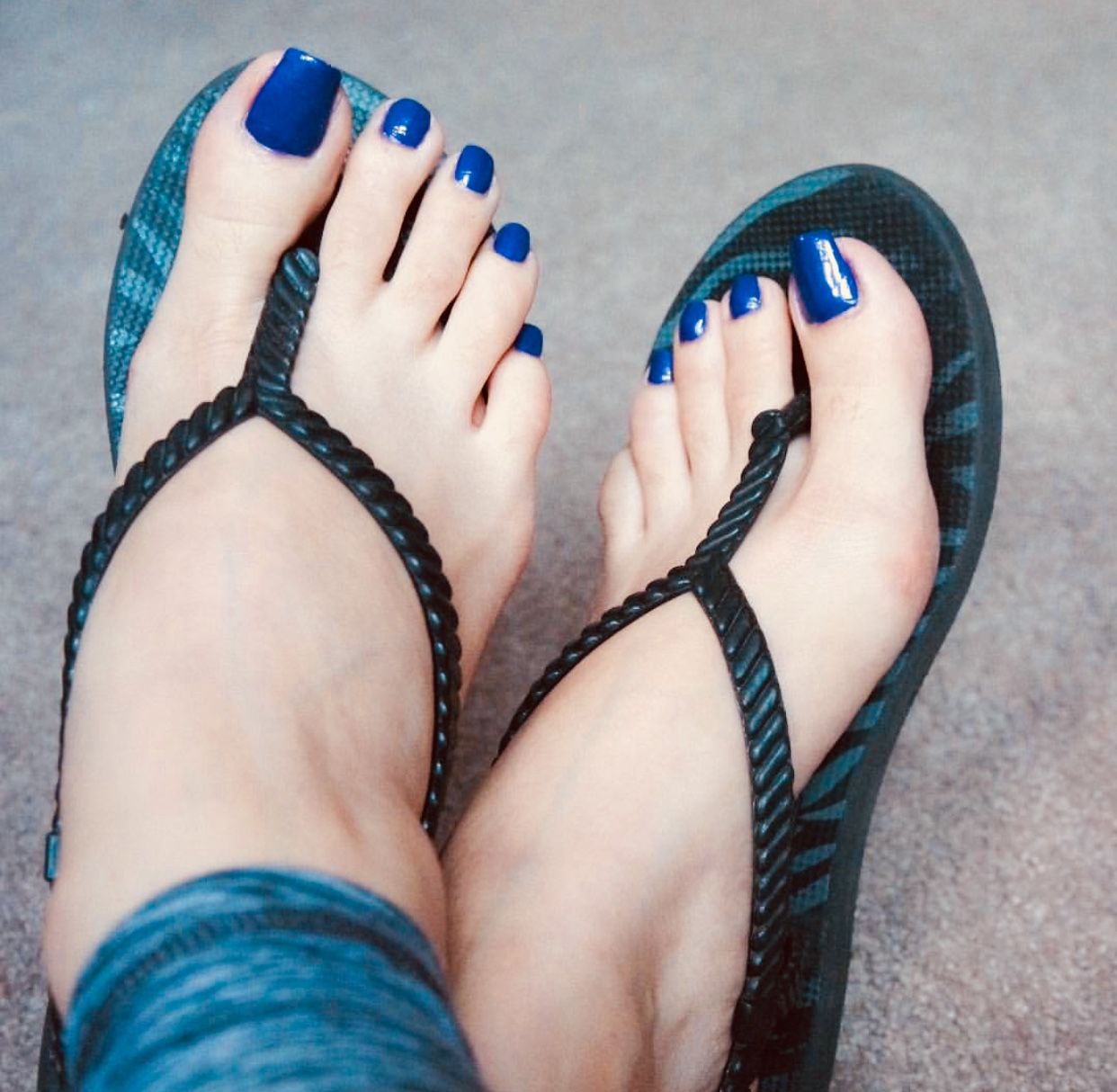
Here are some products available in the market today which could help treat your curved toenails.
1. BEZOX Precision Toenail Clippers
This clipper is designed for thick and brittle toenails caused by nail fungal infection, damage or aging. This is the most recommended by professional podiatrists since this product is very sharp and durable and also comes with an ergonomic design. Plus it is also made of surgical grade stainless steel built-in spring which comes with a plastic safety cover and metal custom storage box to keep it safe and clean.
2. Harperton Nippit
This product was designed to easily clip nails, making it the best toenail clippers for ingrown toenails, thick nails and they can assist in toenail fungus treatment as needed. This nippit handle allows optimum grip flexibly because they know that good tools should fit as many hands as possible. Each blade is finished by hand and is the last step in the 14 part manufacturing process which ensures the blades meet cleanly and require the least effort possible to get a great clip.
Each blade is finished by hand and is the last step in the 14 part manufacturing process which ensures the blades meet cleanly and require the least effort possible to get a great clip.
3. Medical Grade Toenail Clippers
This is a very effective tool, this clipper tackles the driest, toughest toenails with ease and precision without tearing or ruining your nails. Plus, it includes a protective cap to help produce the ultra-sharp blade when not in use, and long handles which is an ergonomic design for ease of use.
4. Kohm KP-700 Toenail Clippers
This is made of high-quality stainless steel and is a great tool for cutting thick nails because the blade is able to open wider than 1 inch. Also, the blade of this nipper is very sharp and they have a pointy tip to help fix ingrown toenails. And this nipper comes with a 2 styles safety tips cover and user guide is included in the package.
5. EZ Grip 360 Degree Rotary
This is ideal for those people who have flexibility or dexterity issues, or those who suffer underlying conditions like diabetes and arthritis.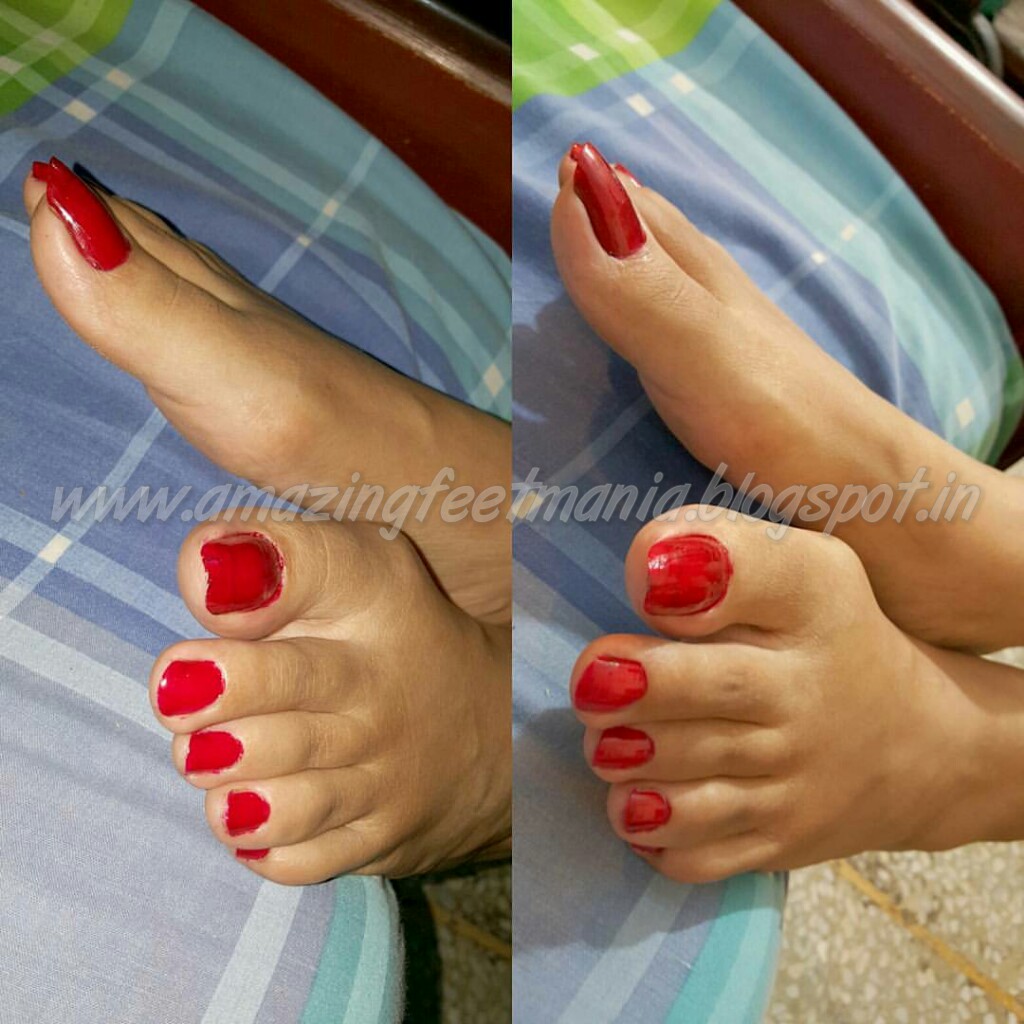 This is lightweight and easy to store away, and its swivel action will put an end to awkward twisting helping you find a comfortable angle to trim your nails.
This is lightweight and easy to store away, and its swivel action will put an end to awkward twisting helping you find a comfortable angle to trim your nails.
6. Clypii Best Nail Clipper Set
This product gives a professional looking manicure or pedicure, because of its high-quality stainless steel. Plus, it is very easy to use and it looks modern and stylish, feels sturdy and lightweight, and will not slip out of your hand due to the matte, brush steel finish.
Minor foot problems like curved toenails may cause serious complications in some people. Ingrown toenails may cause severe pain and infection which could spread to the bone if left untreated.
Amazon.com: Customer reviews: CurveCorrect Ingrown Toenail Home Treatment
I ordered this in the beginning of October of 2019 and am writing this review at the end of February 2020. Now I’m going to give some backstory: I started having issues with ingrown toenails on the big toe of both feet in high school, and then I was stupid enough to have enlisted and made it worse because oh my god, those boots okay? So without saying how oooold I am we’re talking 20+ years of ingrown toenails, tried like every thing I could find, and even had a surgery that didn’t work but was so very traumatizing and lost me half a toenail for more than a year, and it all failed.
This. Works.
I had this on my wishlist for a while before buying, because it IS expensive, but I finally hit the point where I was like “it looks promising so let’s get it because this is getting past unbearable and I am tired of doing nail trimming yoga to do the necessary pruning to have painless toenails.” I ordered it, it came, and yes I read the instructions in advance before trying it. We’ll get to the tips for how to use it later, but suffice to say that it DOES take a little practice to get it on really good. However it isn’t as hard as some of the other reviews make it out to be, once you figure it out. But again, more on that later.
I’m going to start with it wasn’t the most comfortable thing at first, not at all. It made my toes tender when I started them, for a couple days but no more than that. Yes, it could be interpreted as a bruised feeling, but frankly the ingrown toenails hurt me worse and I have a higher than normal pain tolerance anyway so it was tolerable for me.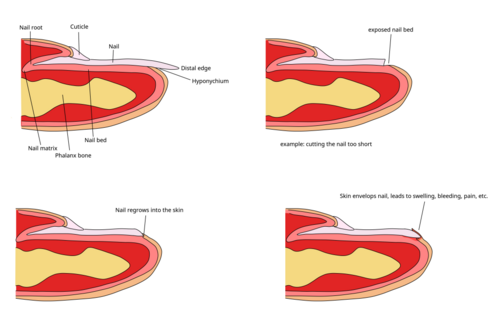 for others, putting this on before a couple days of staying at home might be the best course of action. However, I noticed a change right away. For me, because the cuts I used on my nails was so deep, I placed 2 strips the first time I put them on; one at the mid-nail to lift the cut out of the skin groove, and the other at the tip to keep it up, too. (I did put it on other toes, as well, that was a terrible idea, please check the tips for the different strengths because it’s important. But it worked on those too, just with bruising painfulness.) The relief was pretty much immediate, no lie the pain from the ingrown nails was gone nearly the moment I got it on. It was tender and sensitive where it had been dug in for a few days to a week, but even that little bit got better, too. And then was the slow growing out process, and reapplying, and getting way better at that too, and even more waiting.
for others, putting this on before a couple days of staying at home might be the best course of action. However, I noticed a change right away. For me, because the cuts I used on my nails was so deep, I placed 2 strips the first time I put them on; one at the mid-nail to lift the cut out of the skin groove, and the other at the tip to keep it up, too. (I did put it on other toes, as well, that was a terrible idea, please check the tips for the different strengths because it’s important. But it worked on those too, just with bruising painfulness.) The relief was pretty much immediate, no lie the pain from the ingrown nails was gone nearly the moment I got it on. It was tender and sensitive where it had been dug in for a few days to a week, but even that little bit got better, too. And then was the slow growing out process, and reapplying, and getting way better at that too, and even more waiting.
Now to the reason I have done the review now, and how I know it works 100%. It’s been about a month since the last time I had them on, and I will be putting them back on for another period soon to continue this, but last week I was binging on Netflix and had a foot propped up and absently ran my finger over my big toenail. It. Felt. Weird. I freaked out, because why would I have a ridge in my nail?? But lo, after inspecting, I got really really REALLY excited, because I DO have a ridge, but it’s not a ridge. IT IS NEW NAIL GROWTH IN THE APPROPRIATE CURVE TO NOT GROW BACK INGROWN. So that right there proved to me that while I was sure it was working because the ingrown nail is over the skin and long enough not to go back in, and it’s not hurting, and everything is fine. It has corrected the sharp curve cutting it back so far created, and all the new nail growth is going to be normal again.
I CAN’T STRESS ENOUGH THAT IT WAS A PROCESS BUT IT WAS SO WORTH IT.
Now, the tips and tricks.
1. The biggest one is that this is the curve strength for the big toenail, not any other nail. You can order other strength kits on their website, or as they specify you can also narrow this one to be weaker for smaller nails. Don’t just put this on anything but the big toe. If you put it on the big toe and it feels bruising, take it off and thin it out, it’s too strong for that nail.
2. You can contact their customer service to order new strips sans the kit.
3. When applying, roughing the nail is so needed, it makes the glue stick better. Make sure you take that step instead of skipping it.
4. A pair of tweezers to sit the strip with glue on it in place is very helpful, and not putting too much glue is also helpful. Less is more.
5. Don’t use the swabs in the kit for what they’re for. Use regular swabs, and take the ones from the kit and use those wooden ends to hold the strip down while the glue sets. The longer you hold it tight to the nail while the glue dries, the longer lasting it is. Rotate the swab so it doesn’t get glued down while doing this.
6. The strips stay on for ages if properly applied, and the company has reassured me that you can reuse them. So do that instead of ordering more if you can!
7. If you are ready to reapply the strip, you can help with the initial “I just put this on and the ingrown area hurts as it lifts out” with liberal application of Neosporin and many bandaids to keep it in.
Pretty sure that is all the tricks I learned. It takes practice. If you fail at first, keep trying. Use acetone or something to clean the glue off, and go for it again until you get it right. It’s like anything else, you are not going to get it perfect the first try. Perfection isn’t even necessary, good enough will work because that is what happened to me most of the time.
This product works. I can’t believe it, honestly, I am still in delighted shock that it’s corrected so much to give me perfect new nail growth. 20+ years of ingrown toenails? Fixed.
UPDATE 11/2020: I see tons of negative reviews, so I wanted to continue my own positive story. I am still using them, I haven’t managed to wear them nonstop like I know I should, but it turns out the older I get the more V shaped my nails become like my grandmothers snaggletoes. However, popping these bad boys on every couple of months has made my life so much easier and pain free. I still do have good nail growth, the problem is no longer the big toes for the most part. The little toes next to them have started that old lady shape, and I just trim a strip thinner and glue it in place and BOOM. Little toe is tender for a couple days, not painful I am super careful of that, and now little toe does not give me issues with bad nail shape. I imagine to counter that hereditary problem I might be looking at lifelong usage, but when the alternative is pain or having a procedure to stop the nail growth on the sides of the nail (which looks very unsightly to me, I’d like to skip it personally if I can, because I live in a beachy place and open toed shoes are a daily thing) which I don’t want. I’m still very pleased with the product and I hope that my tips and trips help anyone who uses them.
How To Get Toenails To Grow Straight: The Complete Guide
A curved toenail is a condition in which the nail grows into the skin rather than going outward. It does not only look bad, but it can also cause a lot of pain.
An ingrown nail causes redness and swelling on your toe and can lead to other problems as well.
If it is not treated for a long time, it can also result in serious infections. Your skin will become hard around the toe and it may start forming a pus-like fluid.
The good news is that preventing curved toenail growth is pretty easy and simple.
If you are interested in knowing how to get toenails to grow straight, then read ahead.
Causes Of Curved Toenails And How To Get Toenails To Grow Straight
Trauma
One of the most common reasons for not having straight toenails means that your foot might have gone through some serious damage.
You may have come in contact with a heavy object, which can entirely change the growth of your nail, causing it to grow inward only.
If the impact of the collision is too strong, it can easily affect the direction of nail growth.
This can be common in athletes who go through rigorous training regimes and may end up putting too much pressure on their foot and toes.
For example, a football player may suffer from inward growing toenails since they have to kick the ball with a lot of force with their feet.
Tight Shoes
If you tend to wear tight shoes very often, now is a good time to stop.
Since wearing shoes that are smaller than your actual size can put a lot of unnecessary pressure on your toes, your toenails may start growing inwards, which can result in curved toenails.
This is why it’s always a better idea to wear shoes that are your size so your toes do not feel suffocated even when you wear them for long periods of time.
Small Toes
Some people simply have small toes and normal-sized nail growth, which automatically results in an inward toenail growth since the toe is not big enough to take the whole size of the nail.
This may result in ingrown toenails instead of straight toenails.
Incorrect Cutting
Not cutting your nails in the correct manner is another common reason for a curved or ingrown toenail.
Some people cut their nails by following the curve of the toe, which means that when it grows back, it will be curved.
This may be okay in the beginning but after a while, a curved toenail starts digging into your toe.
A good idea is to always cut your nails in a straight line to prevent ingrown toenails. Plus, make sure not to cut them too short; otherwise, they may curve.
Poor Hygiene
If you wear closed shoes for long periods of time, your feet may get sweaty, which can result in curved toes.
If your feet are dry for too long, it may also trigger inward growth.
This is why it is important to wash and hydrate your feet and cut your nails every couple of weeks.
This will also keep you away from serious infections, which can easily spread if your toes are covered most of the time.
Genetics
Another common reason for inward growing toenails is genetics.
If you are predisposed to inward growing toenails, it is important to be extra careful since this can cause serious infections.
Inward growth can also cause extreme pain, but getting help will make it better.
How To Treat Curved Toenails
Before trying to treat your curved or inward toenail growth, make sure they are not seriously infected.
If they are, immediately contact a doctor and get professional help. If they are not, you can simply try these techniques.
Here are a few ways to treat curved nails.
Nail Lifting
You can do this one at home. All you have to do is fill a tub with warm water and soak your feet in it for at least half an hour every day.
Make sure to be consistent or it will not work. The next step is to keep a dental floss or a cotton ball under the ingrown edge by lifting the nail.
This way, the nail will not be in direct contact with your skin, which will give it room to grow freely.
Make sure to remove the dental floss or cotton ball every day after moisturizing your feet with warm water.
If the process of nail lifting is causing severe pain, you can take medication that does not need a prescription.
To prevent infection, make sure to apply an ointment near your toe. If you do this every day, you will start to see changes in a few weeks.
Partial Nail Removal
Another way to treat curved toenails is by completely cutting the edges of your nail.
After you have done this, make sure to treat your toe with phenol, which will stop nail growth.
If you do not apply phenol, your nail will simply grow back every time.
After applying phenol, place the cotton on the remaining toenail so it does not encourage more inward growth.
Hygiene
Besides lifting your nail and removing it, you can start with improving your hygiene.
Make sure to check your toenails every week and use a cleaner to remove dirt from under them.
After you cut your nails, a good idea is to file them, especially if you have a habit of wearing socks.
Properly trimmed nails will not stick to the sock, which can not only tear your sock but also break your nail.
Curved toenails can cause serious damage if they are not treated in time. Follow the different tips mentioned above to prevent curved toenails!
Pin This Image
This account is run by a team of writers, researches, and more who simply love contributing to the site.
Signs, Causes, Diagnosis, Treatments, Prevention
Overview
Ingrown toenail
What is an ingrown toenail?
An ingrown toenail is a foot condition that develops when the corner of the toenail grows down into the skin. It usually affects the big toe. Ingrown toenails often happen when people cut their toenails by tapering the corner of their toenail. If the toenail curves with the shape of the toe, it can grow into your skin. Ingrown toenails are common and don’t usually pose a health risk to healthy people.
Who is likely to have an ingrown toenail?
Anyone can get an ingrown toenail. People at higher risk include adolescents, athletes and those who have:
- Diabetes.
- Severe nerve damage in the leg or foot.
- Poor blood circulation.
- An infection around the nail.
How common are ingrown toenails?
Ingrown toenails are a common foot condition. Two out of 10 people who see their healthcare provider for a foot problem have an ingrown toenail.
Symptoms and Causes
What causes an ingrown toenail?
An ingrown toenail can have many causes:
- Incorrectly cut toenails. If you cut your toenails too short or rounded, the nail may grow into the skin.
- Improperly fitting shoes.
- Tearing the corner of the nail.
- Toe trauma, such as banging your toe or getting stepped on.
- Congenital (your foot shape) — for instance, if your nail is larger comparatively with your toe, or the surrounding tissue of the nail border naturally grows around your nail.
- What are the signs and symptoms of an infected ingrown toenail?
At first, an ingrown toenail can feel hard and swollen. If the nail grows into the skin, or the skin grows over the nail edge, bacteria can enter. The nail may become infected. Signs of ingrown toenail infection include:
- Liquid or pus coming out of the toe.
- Pain.
- Redness or darkening of the area.
- Swelling.
- Toe feeling warm or hot.
Diagnosis and Tests
How is an ingrown toenail diagnosed?
You can often diagnose an ingrown toenail yourself, based on your symptoms and how the toe looks.
Your healthcare provider (which may be your regular provider or a foot specialist called a podiatrist) will likely diagnose an ingrown toenail by inspecting it. They’ll examine the skin at the edge of the nail. They will diagnose an ingrown toenail if the skin is:
- Growing over the nail.
- Swollen, tender, warm and red.
What tests might I have for an ingrown toenail?
You typically don’t need any tests or X-rays to diagnose an ingrown toenail. In rare cases, when the toenail is severely infected, your healthcare provider might take a sample culture to identify the infection. X-ray may also be required in more serious infections.
Management and Treatment
How is an ingrown toenail treated?
You can treat an ingrown toenail at home. These steps help control the infection and prevent further pain:
- Soak the foot in warm water and Epsom salts twice daily.
- Keep the foot dry the rest of the time.
- Gently lift the edge of the nail and place some cotton or dental floss between the nail and the skin. Change the pad every day.
- Use an antibiotic cream and a bandage.
- Wear roomy shoes or sandals.
- Use pain relievers such as ibuprofen or acetaminophen, if needed.
Can I cut the ingrown nail myself?
If you have an ingrown toenail, do not attempt to cut it yourself. If you cut the nail, the condition may get worse. If symptoms aren’t getting better with at-home remedies, see a healthcare provider.
Do I need a healthcare provider to treat an ingrown toenail?
If your symptoms haven’t improved within a few days, or the nail looks worse, call your healthcare provider.
You should also see your provider as soon as possible if you develop an ingrown toenail and you have:
Does an ingrown toenail require surgery?
Most of the time, an ingrown toenail heals without surgery. In severe cases, your healthcare provider may need to remove part of the nail surgically. The procedure is called a nail avulsion. Surgery keeps the edge of the nail from growing inward and cutting into the skin. For children who keep getting infected ingrown toenails, permanently removing the nail can help.
During a partial or complete nail avulsion, your provider injects an anesthetic (numbing medicine) in your toe. Then the provider cuts away part or all of the toenail. It can take a few months for the nail to regrow. For recurrent ingrown nails these avulsion procedures can be done permanently with the assistance of a chemical to kill the nail root.
###
Prevention
How can I prevent an ingrown toenail?
You can take these steps to prevent an ingrown toenail:
- Soak the nail in warm water before cutting, or cut nails after a shower or bath.
- Clean your nail trimmer before using it.
- Do not tear or rip nails.
- Trim toenails across the top. Don’t round the corners.
- Wear shoes that fit correctly. They should not be too loose or tight around the toes.
- Avoid repetitive trauma to the sides of the nails.
- If you have diabetes, follow all foot care recommendations from your healthcare provider. With diabetes, do NOT be hesitant about seeking medical help.
Outlook / Prognosis
What is the outlook for someone with an ingrown toenail?
Most of the time, an ingrown toenail is not a serious health problem. Ingrown toenail treatment usually works. The ingrown toenail won’t grow back if you practice good foot care.
You may need regular foot care exams if you have a condition that causes foot problems, such as nerve damage or diabetes.
Living With
When should I see my healthcare provider about an ingrown toenail?
See your healthcare provider for an ingrown toenail if you have:
- Diabetes.
- Signs of an infection (pus or liquid drainage, extreme pain or redness).
- Poor circulation.
- Tried topical antibiotic ointment, soaking and self-care but the toe still hurts.
What should I ask my healthcare provider?
If you have an ingrown toenail, ask your provider:
- Is the nail infected?
- How can I best treat it?
- Do I need surgery?
- How can I keep it from coming back?
- Do I need medication?
- How should I cut my nails to avoid ingrown toenails?
A note from Cleveland Clinic
An ingrown toenail is annoying and painful but very treatable. Often, soaking the nail will improve symptoms within a few days. If it doesn’t get better, see your healthcare provider who can treat it. Don’t attempt to cut the ingrown nail yourself at home. In the future, to prevent ingrown toenails, wear roomy shoes and cut your nails straight across, rather than tapering them to the shape of your toe.
Thick Curved Toenail Causes – Symptoms & Treatment
A curved toenail is a condition in which the side of the toenails curves inwardly causing a digging of the immediate surrounding skin. The thick nails are an eyesore which not only affects the toenails but also fingernails.
If the condition is left unchecked or untreated it can result in a lot of pain, causing redness and swelling of your feet. If the problem persists and you don’t seek medical attention, it can result in the growth of an infection
At first, you may start noticing your skin getting hard then followed by the formation of fluid or pus in the surrounding areas. Thick Curved toenails can be an acquired condition or hereditary traits being passed down.
In this post, we are going to have a thorough and in-depth discussion on its causes, symptoms, and possible treatments of thick curved toenail condition. So, let’s dive in!
Causes of Curved Toenails
Trauma
Trauma is one of the major reasons for curved toenails especially if there is damage to your toe, the pains and damage changes the growth trajectory of your nails causing it to grow inwards rather than the normal growth course.
On your feet, the big toe is the likeliest candidate to grow inwards as it absorbs all the shock during impact resulting in this condition. It’s important to note that, a single accident will not cause a curved toenail but a rather repeated accident to your feet causes trauma which leads to thick curved toenails.
For athletes who engage in strenuous physical exercises and exert a lot of force and pressure on the toe end are the likeliest to be affected by thick nails.
Putting on tight shoes
Wearing shoes that are a bit small compared to your feet size will lead to close scrunching of your feet due to limited space.
If your wear the tight-fitting shoe for a long period, you’ll start noticing your toenails start growing inwards rather than the normal growth trajectory due to the excess pressure exerted on them, the likeliest affected toe will be the big one.
It always recommended purchasing the appropriately sized footwear, for kids its always advisable to pay special attention to their feet sizes as it can be a little bit tricky keeping up with growth spurts.
Don’t guess your feet size when buying shoes but rather try them out first before buying one. Not that don’t just check on the length of the shoe but also the width of the shoe as a narrow shoe can result in the downward growth of your toenails.
Poor grooming and hygiene
People who sweat a lot on their feet and they do not clean and let them dry are likely to develop thick curved toenail. Its always recommended to clean your feet thoroughly daily and let them dry. Also, trim your toenails once every two weeks.
Cleaning and drying your feet will minimize the chances of an infection, moist environment promotes bacterial growth. Never share your shoes with other people which prevents the spread of infections.
Genetics
Other people have the genetic predisposition which makes their toenails naturally curve inwards, for such people they should take extreme precautions. The thick curved toenails will likely result in extreme pain so it’s advisable to visit your doctor regularly, another remedy is surgery.
Diet
Studies have shown that deficiency of zinc and iron will most likely cause the upward curving of toenails making you susceptible to injury. The deficiency of B12 is also likely to cause the curving of the toenails.
What are some of the symptoms of thick curved toenails?
One of the earliest symptoms of curved toenails is swelling and tenderness of the affected area, if you apply pressure on the affected part, you’ll feel a sharp pain. If you continue to ignore the problem, the condition will continue to worsen leading to fluid build-up and increased swelling.
The surrounding skin starts to swell and becomes red signaling an infection on your toes, at this point you’ll start feeling severe pain all the time even if you don’t apply force or pressure on the affected part. You’ll start seeing pus coming out from the infected area as well as blood, the affected area will also be a bit warm compared to other parts of your toes.
The skin surrounding the infected area becomes thick as a result of the growth of granulation tissue whose main role is to assist the curing of wounds. Other symptoms of thick curved toenails include:
- A change in toenail color to green, brown or yellow
- Toenails have a foul odor
- The toenails have a chalky or scaly appearance
- The toenails have debris and dirt underneath
Treatment options of thick curved toenails
Nail lifting
If you are sure that your toenails aren’t infected, then there is no need of going to a doctor. For those who are affected by thick curved nails you can fix them yourself but it’s always advisable to go to a doctor for excellent results.
For home treatments, you can start by soaking the affected feet in warm water, twice or thrice a day. The next step is placing a dental floss or cotton ball under the curved toenails and lift the curved edges slowly, this will separate the ingrown edges from the skin allowing them to grow in a proper trajectory.
To manage the pain, its recommended you either use Advil or Tylenol, you don’t require a prescription to buy them as it can be bought across the counter. To minimize infection on the affected area, you can apply a topical antibiotic cream or steroid cream
Partial toenail removal
This process entails cutting the ingrown edges of your toes and apply phenol which will prevent the growth of the curved toenails. To minimize inner growth, you can place a ball of cotton wool on the remaining nails.
Note that don’t try the partial nail removal yourself, only certified professional should do that.
Matrixectomy
If thickness causes ingrowing of your nails instead of the curvature, your whole nail might be removed by the doctor, this process is known as Matrixectomy. To prevent pain, anesthesia will be administered.
Home Treatment of Thick Curved Toenails
Conclusion
Having thick curved toenails is not a life-threatening condition but if left untreated it can worsen over time and lead severe pain and uncomfortable when walking. The good news is they are multiple effective treatment options.
A crooked toe is not only an aesthetic problem – Baltic Medical Center
Outward curvature of the big toe (in Latin – hallux valgus) or, in other words, “popping out bumps on the toes”, deformed foot bones are the most common foot deformity among women.
Let’s talk about the causes of this deformity and its treatment with Matas Nenartenas, an orthopedic traumatologist at the Baltic Medical Center.
What are the causes of the curvature of the big toe?
Many people believe that toe curvature is due to the wearing of high-heeled shoes or flat feet, but this is only partly true.In reality, this deformation is hereditary. About 80% of patients notice that such a deformity was in the mother, grandmother or other close relatives.
True, such external factors as shoes with a narrowed toe, shoes with high heels can undoubtedly deform healthy feet over time.
This pathology of the foot is also associated with weakness of muscles and ligaments, impaired function. Frequent pregnancy also sometimes contributes to the occurrence of this problem.If a woman puts on a lot of weight, then due to the increased load, the ligaments are weakened, and as a result, deformity of the foot may begin.
In women, this problem occurs much more often than in men. The spread of this deformity among women is almost 10 times more.
How to help a patient in case of a deformity of the big toe?
Unfortunately, if the deformity is painful and progressing, then the treatment can only be surgical. Conservative measures such as the gaps between the fingers are ineffective and, in some cases, even harmful.When using such means, the small fingers are pushed to the side, as a result of which their deformations can occur.
Are curvatures of the finger just an aesthetic problem or does it affect health as well?
This is not only an aesthetic problem. Due to the fact that the articular surface of the fingers wears out faster and pain occurs, this is primarily an orthopedic problem. We lean on the foot, which makes up a small area that carries the body’s weight, so at the moment of repulsion, the load force is very large.Often people do not even imagine the load that falls on their feet.
Patients come to us most often because of pain, and not for aesthetic reasons.
When should I see a doctor?
The first pain is a signal of the need to consult an orthopedic doctor. If the bones are not treated, the pain will intensify, and the other toes and the foot will begin to deform.
The sooner a person consults an orthopedic surgeon after the first signs of foot deformity and pain appear, the easier and faster the treatment process will be.
How to help a patient in case of a deformity of the big toe?
The most important thing is to look after your feet, keep them healthy and not overdo it with wearing uncomfortable shoes. After all, our body rests precisely on the feet, and they support all its weight. Therefore, I recommend very carefully choosing comfortable shoes that are suitable for their physiology, with a heel height of 2-3 centimeters and a fairly wide front part. It is not recommended to constantly and often wear high-heeled shoes.
In what cases do you decide on the need for an operation?
When consulting patients, I try to adhere to the following attitude: as long as there is no pain and discomfort, surgery is not required. Any surgical intervention is risky to a certain extent, so it is necessary to weigh the pros and cons. If the quality of daily life is deteriorating due to foot pain, then surgery may be considered. The pain is felt not only due to the friction of the bone against uncomfortable shoes and calluses, but it occurs in the foot itself after walking.Exhausting pain is a signal of the need for treatment and it is better not to put it off on the back burner. The smaller the deformation, the easier the operation and the better the results.
How is the operation performed?
The surgery technique is selected by the surgeon depending on the patient’s age, degree of deformity and bone structure. The operation consists not only in the restoration of the bone, but also in the correction of the surrounding tissues. During the operation, intravenous anesthesia is used.The operation takes about an hour.
What is the postoperative period? When can a person return to work and daily activities?
Modern surgery has taken a big step forward. In the postoperative period, minor pain may occur for 1 to 2 days, but it can be relieved with medication. If the deformity is small, then the postoperative period will take about a month. Those who work in the office will be able to return to work in about 5 weeks.
In the postoperative period, you can only lean on the heel. Currently, there are special postoperative shoes in which walking is quite comfortable and safe. It is very important to follow the instructions of the doctor, because if you place your foot incorrectly, and all the work will go to waste.
Physical activity on the foot is restored gradually with physical therapy procedures and certain physical exercises. Therefore, the postoperative period is highly dependent on the consciousness and mood of the patient.
If the problem is the same on both legs, is it possible to operate on both legs at once?
We recommend to operate with one foot. It is necessary for the operated foot to heal completely and to restore its functions.
What are the results of the operation? Can the deformation recur?
Most often, surgical treatment is successful. With proper operation, the probability of deformity resumption is about 5%.
There is a high probability in the case of such an operation for children, because their skeleton has not yet been fully formed.Therefore, it is recommended to operate on adults.
Repeated trauma can complicate the results of the operation.
90,000 Deformation of the toes and curvature of the toes, learn about the treatment and surgery for hallux valgus on the site of arthroplasty ortho.in.ua
Deformity of the feet is a fairly common disease with which patients seek medical help. It can affect both individually and all fingers at once. The thumb is especially prone to deformation.This is due to the uneven loading of the muscles, leading to a gradual but steady deformation of the joint. The causes of this ailment are most often:
- heredity;
- rheumatic diseases;
- consequences of injuries;
- foot overload;
- Muscle atrophy due to prolonged immobilization.
90,089 neurological diseases;
The deformed bones of the toes do not look aesthetically pleasing, and besides, they are painful, accompanied by unpleasant corns, calluses, trophic disorders of soft tissues.In addition to external changes, there are problems with ligaments, tendons, joints, bones. This is fraught with much more serious ailments than mild discomfort. Developing:
- arthrosis;
- flat feet;
- exostosis of the bones of the feet;
- chronic bursitis, etc.
Types of deformation of toes
There is a curvature of the fingers in different guises. Deviations are:
1. Valgus deviation of the first toe. With hallux valgus, the big toe seems to be separated from the foot, and an unpleasant growth appears inside at its base.The foot becomes wide with a flattened arch.
2. Hammer-like deformities of the toes. Typical for II – IV fingers, manifested atypically bent position of the fingers in the metatarsophalangeal joints with the formation of painful calluses on the dorsum of the metatarsophalangeal joints.
3. Tailor’s Stop. Bend the little finger inward and the metatarsal bone outward. The curvature causes a lot of inconvenience with the new shape.
4.Claw-like. They are characteristic of the entire foot, except for the big toe. The fingers are involuntarily fixed in a bent downward position, like the claws of animals.
The progression of the pathologies of the listed types can cause significant discomfort both when putting on shoes and in a free state. Deformation of the foot and “bumps” on the toes only intensify over the years if therapeutic measures are not taken in time.
How to treat curvature of the toes
Therapy involves the correction of the foot by the correct selection of shoes and orthopedic accessories – insoles, instep supports, correctors, interdigital inserts, rollers.To relieve painful sensations against the background of increasing inflammation, pain relievers, anti-inflammatory drugs are used, as well as physiotherapy procedures – high-quality full-fledged massage and a compiled course of gymnastics for the feet, baths, a rational mode of load on the foot.
If the deformity of the foot interferes with the full functioning of a person, causing pain, debilitating discomfort, surgical treatment is indicated. The purpose of the operation is to eliminate the deformity of the foot and thereby relieve the patient from pain.
After the complex treatment of the deformity of the toes has been carried out, in order to avoid the return of the defect, wearing comfortable orthopedic shoes and insoles is required. This is the guarantee of a future life without pain, defects, pathological discomfort.
Clinical examples
Planovalgus deformity of both feet with hallux valgus
A B
Fig.1 A – the appearance of planovalgus deformity of both feet with a hallux valgus deviation of the first toe; B – the appearance of the feet after surgical treatment.
Rheumatoid foot
A special category of deformities is represented by foot deformities in patients with rheumatoid arthritis. The deformity of the foot, called “rheumatoid foot”, develops.
A
B
A – appearance of rheumatoid feet upon admission to the clinic, before surgical treatment; B – the appearance of the rheumatoid feet of the same patient 2 months after surgical treatment.
We will help patients to cope with the illness and return to an adequate life. If you are worried about “bumps” on the toes, deformity of the foot – the treatment will definitely give a positive effect.
Why are fingers deformed?
The foot of an adult is a complex system consisting of 26 interconnected bones. Sometimes, some of them can deform and become the cause of severe pain, thereby turning every step into a real torture.The phalanges on the legs are bent for various reasons: from congenital disorders to diseases that, as they progress, cause damage to bone tissue.
Most often there are curvatures (deformities) of the big and second toes, which occur against the background of biomechanical disorders. Quite often, curvature of the phalanges is diagnosed in people with abnormally long toes, very high arch or flat feet. Curved joints on the feet, in particular on the phalanges, are one of the symptoms of progressive arthritis.The wrong shoes – too narrow or the wrong size – can also lead to a violation. In addition, the shape of the foot can change due to injury.
Regardless of what caused the curvature, in many cases the problem can be eliminated and the leg returned to its anatomically correct shape only by surgery.
Types of deformity of toes
Types of anomalies that are most often diagnosed:
- deformity of the joints of the first (big) toe – valgus;
- hammer phalanges;
- tailor’s foot;
- claw phalanges.
Deformity of 1 toe, also known as Hallux valgus, is the most common type of disorder. The well-known “bone” is hidden behind this complex Latin name. The longer the disease progresses, the more the first toe deviates into the foot, and a lump forms in the joint area. Wearing tight shoes with such an anomaly further distorts the legs and causes inflammation in the joints.
Hammer anomaly usually affects the second toe (it takes on a Z-shape).The cause of this disorder is excessive lengthening of the second metatarsal bone. In women of this type, deformity occurs 5 times more often than in men, and all because, as a rule, it is caused by overly narrow shoes and high heels.
Tailor’s foot is known in medicine as Taylor’s deformity. The violation is manifested by the formation of a bone on the little finger, and the phalanx itself bends towards the middle of the foot. As in previous cases, as it progresses, the anomaly is accompanied by painful sensations in the joint area.
With a claw-like anomaly, the anatomy of the fingers changes – they curl inward, like the claws of birds. Often, the anomaly manifests itself simultaneously on all phalanges on both feet. At an early stage of the disease, the phalanges still retain their mobility, but then the curvature becomes fixed. If the ailment is not treated, complications are possible in the form of gait disturbance, the formation of calluses, inflammation of the joints, with a particularly advanced form – loss of mobility.
Treatment of curvature of the fingers
Deformity of the joint of the big (first), second or 5th toe cannot be ignored, this problem requires treatment by an orthopedic surgeon.And the earlier you start therapy, the more chances you have to eliminate the anomaly. In childhood, many types of foot curvature can be treated with special orthopedic shoes and physical therapy. In adults, it is almost impossible to achieve positive results through conservative treatment. The fact is that in early childhood the bones of the feet are softer and more pliable, so it is easier to restore their anatomically correct position. In adulthood, only surgery will help.
Despite the fact that many perceive the curvature of the feet solely as a cosmetic problem, it is quite a serious orthopedic disorder.To eliminate the deformity of the foot with Hallux valgus, as well as to treat other types of curvature, a surgical operation is required. If the disease is not treated, it will progress, accompanied by increasingly severe joint pain. The final stage of curvature is disability.
How to treat an ingrown toenail
Ingrown toenail treatment at home
Ingrown toenail is not just a cosmetic defect that causes significant discomfort – it is a disease called onychocryptosis.The nail plate grows into the lateral part of the nail fold and injures the skin with a sharp edge, provoking a purulent-inflammatory process. An ingrown toenail appears more often on the big toes, causes discomfort and pain, and can cause purulent inflammation, infection and tissue death.
The condition cannot be ignored, since a purulent focus on the toe is an open gateway for an infection that invades the body and spreads through the bloodstream. In addition, onychocryptosis causes significant discomfort.First, there are problems with the choice of shoes, and then – severe pain while walking.
Why does the nail grow in?
The main factors influencing the disease are:
- Incorrectly executed pedicure with cutting out the corners of the nails. Few know to trim them straight.
- High-heeled shoes too tight. It contributes to the wrong redistribution of the load on the feet. Shoes made from artificial material are also harmful to the health of the feet.The skin in it does not breathe, which provokes the occurrence of fungal and other similar diseases. As a result, the nail plate is injured, changes its shape and ingrowth can occur.
- Toes too wide with convex nail ridges and plates, the lateral edges of which are curved inward.
- Transverse flat feet with a strong deflection of the position of the thumb inward or outward.
- Excessive stress on the feet due to increased physical activity, high weight, functional underdevelopment of the ligaments and muscles of the lower extremities.Flattening of the arch occurs, hallux valgus develops.
- Congenital abnormalities of the foot structure, thumb too long.
- Accelerated nail growth after trauma, fungal infection, frostbite, pathological changes in psoriasis or hyperhidrosis of the feet.
- Nail dysplasias caused by diseases of internal organs, metabolic disorders and diabetes mellitus. At the same time, the nails resemble watch glasses, acquire a tick-like or swirling shape.
- Congenital onychia and crossed toes.
Ingrown toenails are more likely to occur on the big toe, since this is where a significant part of the load is. When walking, a person relies mainly on him.
Photo of an ingrown toenail
Symptoms of an ingrown toenail include:
- pain;
- limping;
- lack of shine of the nail plate;
- foliation of the nail at the tips.
Since a person has a lot of nerve endings at the ends of the fingers, therefore, they have increased sensitivity. If a person suddenly has a nail in his toe, then he will feel a sharp pain when walking, especially in uncomfortable shoes.
[spoiler title = ’See photo’ style = ’default’ collapse_link = ’true’] [/ spoiler]
Possible complications
Many people think that an ingrown toenail is not something dangerous – it is important to just cut it out in time.In fact, doctors warn of possible complications against the background of the problem under consideration:
- finger gangrene;
- lymphadenitis;
- osteomyelitis.
90,089 abscess of a finger;
An ingrown toenail is not only a cosmetic defect – it is a problem that needs to be addressed quickly, often in tandem with doctors. Otherwise, this condition can lead to serious consequences.
Treatment options
Treatment of an ingrown toenail is a rather difficult task.There are many methods, but none of them is perfect, relapses occur. There are three main areas of treatment for an ingrown toenail:
- Surgical interventions;
- Conservative (non-surgical) methods;
- Orthopedic methods.
Milling Bracket
Wire loop, which is made individually and applied to the nail without cutting it off. Acts on the screed principle, raising the corners and preventing them from growing.Over time, the plate straightens.
Before use you need:
- Thoroughly clean the nail and the skin around it;
- to properly cut the corners of the plate;
- Remove loose and rough skin on the rollers, as well as from under the nail;
- treat with a disinfectant solution.
A stiff wire is placed across the nail and the tips are folded over the edges (in the middle). After 3-4 days, you can feel the elimination of pain and some relief.
[spoiler title = ’See photo’ style = ’default’ collapse_link = ’true’] [/ spoiler]
Recipes for trays
Treatment of an ingrown toenail with folk remedies involves several types of drugs, which differ in the method of application. One of them is the use of medicinal herbs and some products for local water treatments.
- A bath of baking soda and salt helps to soften the skin around the ingrown toenail. It is necessary to mix 100 g of salt and 50 g of soda in a small basin, pour this mixture with hot water.The temperature of the water should be approximately 39-40 ° C for the steaming effect to be obtained, but without burning the inflamed tissues. The bath lasts 10 minutes.
- A bath with pharmacy chamomile will help reduce inflammation, as well as relieve puffiness. For its preparation 9 tbsp. l. pour 3 liters of boiling water over dry chamomile flowers, let it brew for an hour, then strain. The solution is used for baths, heating it to a comfortable temperature.
- Trays with St. John’s wort have an antiseptic and healing effect.Pour 10 tbsp into a saucepan with 2 liters of boiling water. l. dried chopped St. John’s wort and leave for 30 minutes in a water bath, then strain. The infusion can be used for local foot baths.
In addition to the baths, it is advisable to wash your feet in warm soapy water several times a day and wipe them dry. It is important to keep your feet clean and sweat less throughout the day.
Ointments and gels
Ointments and gels are the best ways to soften an ingrown toenail, kill infections and correct the correct growth of the plate.
- Dr. Scholl’s is an excellent gel for softening and relieving inflammation. Suitable for children from 12 years old.
- “Nogtinorm” – ointment with petroleum jelly, propylparaben, palm oil SK-CO2, licorice extract and useful herbs. Softens the nail plate, fights inflammation and normalizes growth.
- Ichthyol ointment – fights infections and pain. Used for night dressings.
- “Levomekol” gel – kills bacteria and stimulates regeneration.
- Vishnevsky ointment – helps to eliminate pus and destroy pathogens, accelerates regeneration, is used as a dressing.
- Gel “Dimexide” for ingrown nails – relieves inflammation, but has a large list of contraindications (pregnancy, abnormalities in the liver and kidneys, stroke, cataracts, pregnancy).
[adsen]
Traditional methods of treatment
There are many recipes for treating an ingrown toenail at home:
- Before going to bed, put a cut lengthwise aloe leaf and bandage, relieves inflammation.
- At the top of the nail plate, file in the center, this will enable the body to compact this place, instead of the lateral ones;
- Relieve inflammation with warm solutions with sea salt, herbal decoctions and infusions (chamomile, sage).
- Calendula and chamomile. You need to take 50 g of dried flowers of calendula and chamomile, pour 1 liter of boiling water. Insist for 2 hours, then strain and dilute the infusion with another liter of boiling water. Cool to an acceptable temperature, steam in the infusion of the leg. After that, the ingrown edge of the nail can be lifted and a cotton wool tourniquet soaked in iodine, butter or sea buckthorn oil can be placed under it.
- Butter. Pre-steam your leg in a baking soda bath. Put a small piece of butter on the nail, cover it with a gauze napkin, a piece of cellophane and wrap it up.The bandage must be worn within 24 hours. After that, they again make a soda bath for the feet, raise the ingrown edge of the nail and put a cotton swab soaked in butter under it. The procedure is repeated until the nail grows back.
- Make a small container in the form of a cap made of waterproof material, put butter there and put it on your finger. This method will help relieve pain. After anesthesia, put a bandage under the nail.
- Sea buckthorn oil and plantain.Steam your leg in a solution of baking soda or potassium permanganate. Place a few drops of sea buckthorn oil in the area of the ingrown nail and wrap with a sheet of plantain, re-bandage. After the edema subsides and the inflammation subsides, the ingrown edge of the nail is raised and a cotton tourniquet soaked in sea buckthorn oil is placed under it.
- An anti-inflammatory drug is Vishnevsky’s ointment, which must be applied to a tampon, applied to a sore spot and bandaged.
- Alum for ingrown nails.Previously, the leg is steamed in a solution of salt, soda or potassium permanganate. Then the area of the ingrown nail is carefully treated with burnt alum and a bandage is applied. Usually the procedure is repeated within 2 weeks.
If folk methods do not help, you need to see a doctor. In some cases, treatment of an ingrown toenail is possible only after surgery.
Ingrown nail removal
A doctor will help to cure an ingrown nail completely and radically, but there are other methods of dealing with a nuisance:
- Laser correction.A gentle method of treatment, the effectiveness of which is 100%, after the operation, the nail will not grow back again. It is carried out under local anesthesia, all growths are partially removed.
- Surgical removal. The nail is partially dissected or removed, eliminating the infected cushion. In severe situations, the nail plate is removed completely using local anesthesia. After the operation, sutures are applied and dressings are made every day for 3-4 weeks. The new nail should grow back in 6 months. However, after the operation, the nail may well grow as deformed, or the pathology will reappear.
These methods involve some unpleasant intervention, so to speak, small surgeries that will help treat an ingrown toenail. However, there are other methods, one of them is the use of special staples.
Reviews
Some user reviews:
- Nadezhda Egorova. I do not advise anyone to run such a situation. A year ago, my toe on my left foot began to ache. At first I did not pay attention, but after about a week he began to hurt so badly that I even began to move with difficulty.I tried to cut it in different ways, but there was no sense in it. I used all sorts of folk remedies to steam and anesthetize the nail, and the effect is almost zero. I had to go to the hospital. There they removed the part of the nail that stuck in, and from which the finger began to rot, then they treated the wound and now everything is fine.
- Olga Melnikova. I can give this advice. First, you need to understand at what stage the disease is. If the nail has grown a little into the side of the finger and does not fester, then this is only the beginning of development.And you can cure the nail by taking salt or soda baths with the addition of potassium permanganate for 15-20 minutes. After steaming the legs, carefully trim the ingrown part. And if the nail began to fester, then do not waste time, but go to the pharmacy for Vishnevsky’s ointment. It draws out pus well and prevents the spread of infection. To cure the ailment, apply the drug to a small piece of bandage and wrap the damaged areas of the skin (fix the bandage, try to change it every three hours).If it is not possible to treat the disease at home, then a visit to the surgeon is inevitable.
[spoiler title = ’See photo’ style = ’default’ collapse_link = ’true’] [/ spoiler]
Prevention
How to deal with recurrent ingrown toenail? To avoid repetitions, it is enough to adhere to a few simple ways to prevent onychocryptosis:
- Nails should be cut correctly and regularly. You cannot cut them “at the root”, round the corners too much and or completely remove them.These actions just allow the nail plate to rest on the surrounding soft tissue.
- With flat feet, a person must use special orthopedic insoles, and also do not forget about preventive foot massage and gymnastic exercises.
